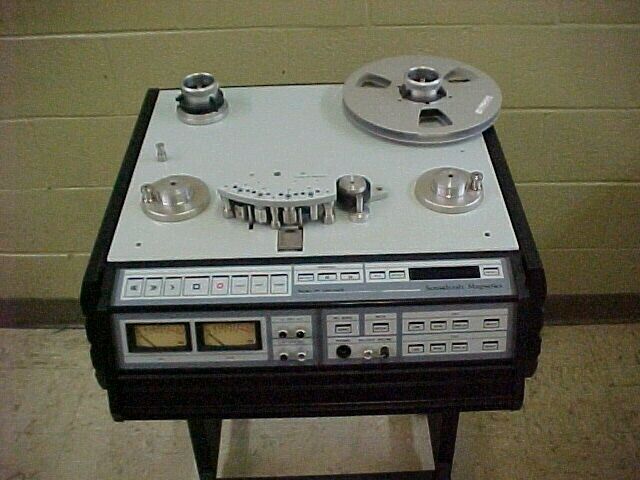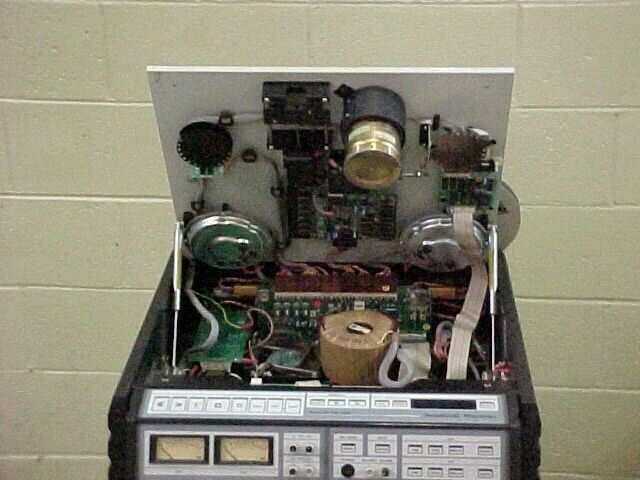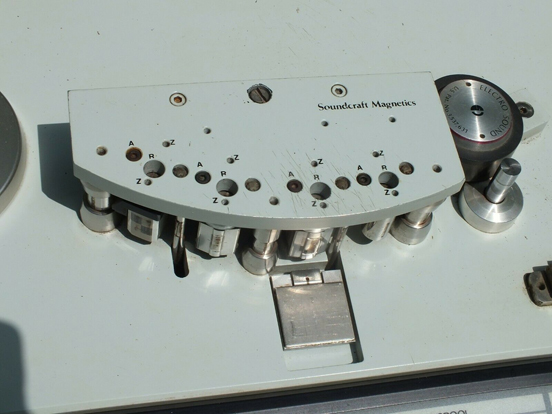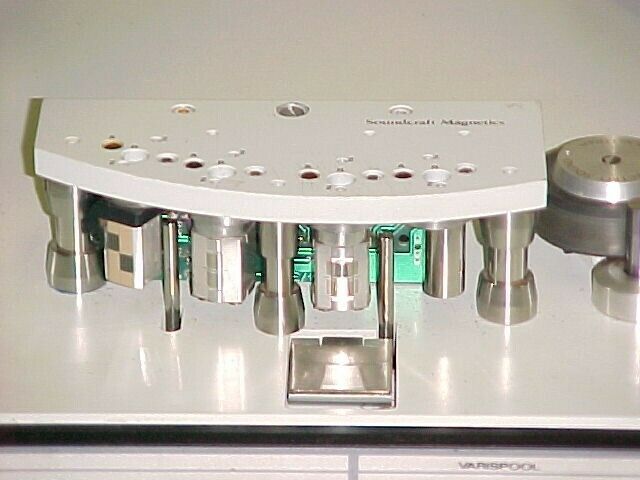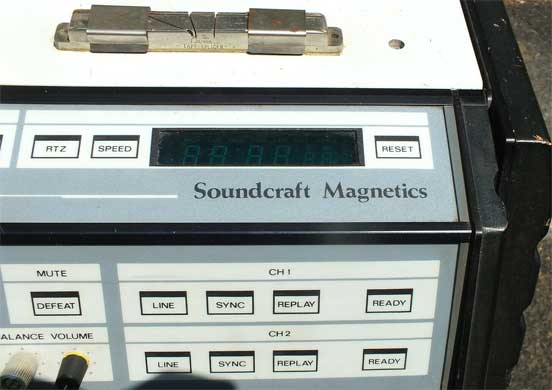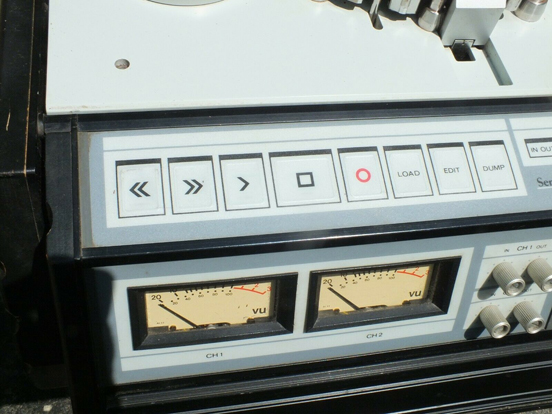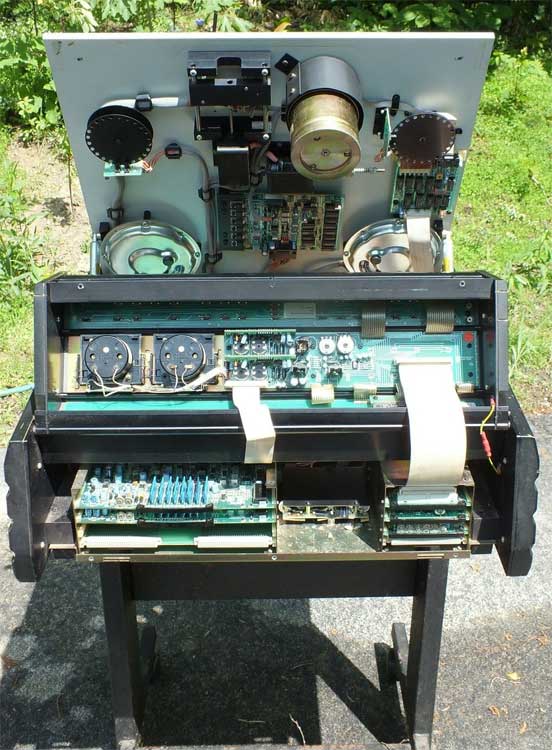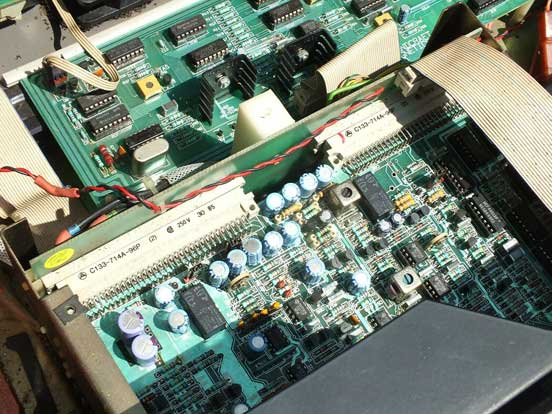Reeves Soundcraft
Hazard E. Reeves (July 6, 1906 - December 23, 1986) was a pioneer in sound and sound electronics, and introduced magnetic stereophonic sound to motion 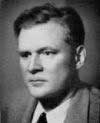 pictures. He was also the president of over 60 companies, including Cinerama Inc.
pictures. He was also the president of over 60 companies, including Cinerama Inc.
Born in Baltimore, Maryland, Reeves graduated from Georgia School of Technology in 1928 with a degree in engineering. Reeves moved to New York, where his first job was for the Columbia Phonograph Company. After being appointed as a special consultant to the Harvard University Film Foundation, his interests shifted from phonograph recordings to motion picture audio.
By 1933, Reeves had set up his own sound recording studio in New York. The studio soon became the largest on the east coast of the US.
In 1939, Reeves met Fred Waller during the construction of the 1939 New York World's Fair on an exhibit for Eastman Kodak. Waller showed Reeves his idea for a multiple-camera photography system that would fill the peripheral vision, initially dubbed "Vitarama". Waller asked Reeves if he could invent a multi-channel  system of sound. Reeves agreed, and ultimately invested money into the company.
system of sound. Reeves agreed, and ultimately invested money into the company.
During World War II, Reeves ran the Reeves-Ely Laboratories, manufacturing electronic products for the war effort. His company won the Army-Navy "E" Award for merit four times, fulfilling contracts totaling millions of dollars.
Following the war, in 1946, Reeves founded the Reeves Soundcraft Corporation and directed the operation of a number of companies manufacturing a variety of products including recording tape and film, record discs, wire cable, television tubes and cameras and precision recording equipment. Reeves introduced magnetic recording to the film industry in 1948.
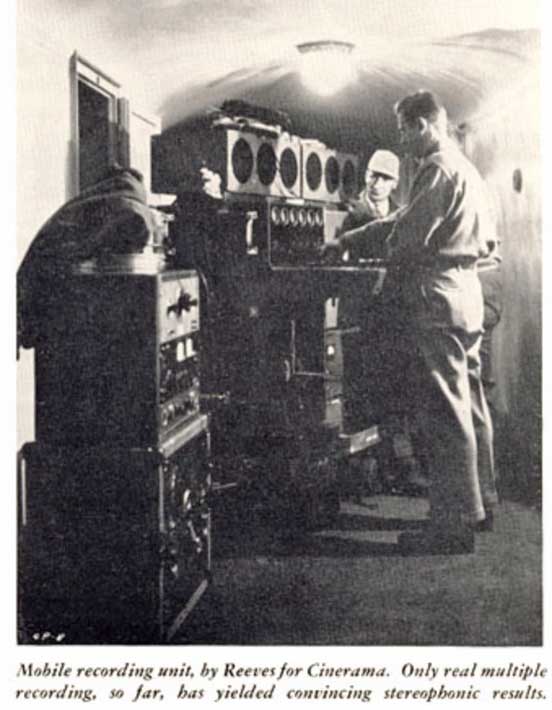 Utilizing magnetic tape recording, Reeves created a six-channel sound system for Cinerama, the company of which he was president by 1952. That same year, Cinerama released its first picture, This is Cinerama. Reeves' sound system was the first, discrete stereophonic sound system used in post-war commercial application.[citation needed] (Walt Disney had released Fantasia in three-track optical sound in 1940, but the Disney "Fantasound" system was not used for any other film afterwards.)
Utilizing magnetic tape recording, Reeves created a six-channel sound system for Cinerama, the company of which he was president by 1952. That same year, Cinerama released its first picture, This is Cinerama. Reeves' sound system was the first, discrete stereophonic sound system used in post-war commercial application.[citation needed] (Walt Disney had released Fantasia in three-track optical sound in 1940, but the Disney "Fantasound" system was not used for any other film afterwards.)
Reeves Soundcraft Corporation won an Academy Award in 1953 for their development of a process of applying stripes of magnetic oxide to motion picture film for sound recording and reproduction.
Reeves died of a heart attack in Tuxedo Park, New York.
Reeves was married to Adeline Johnstone Fowles. Their granddaughter is actress Perrey Reeves.

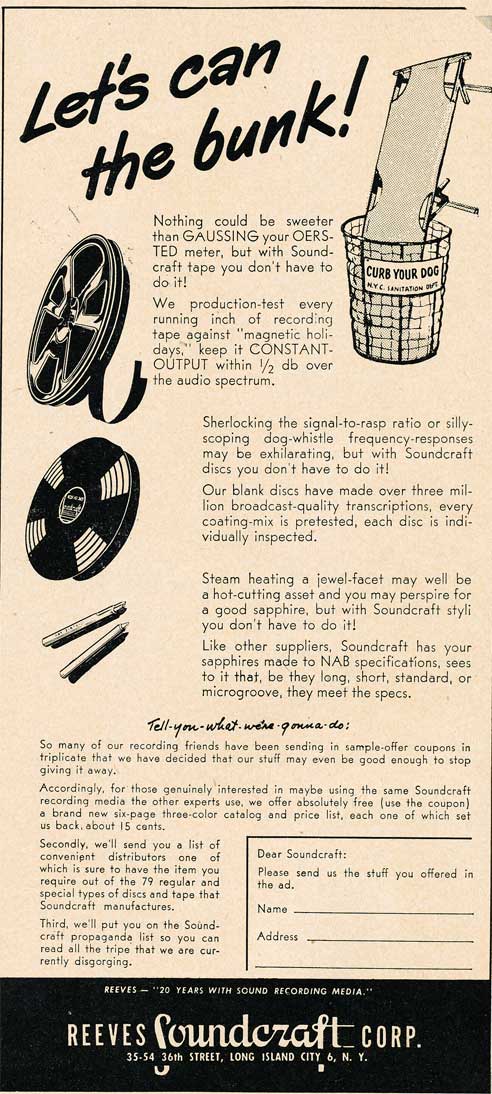
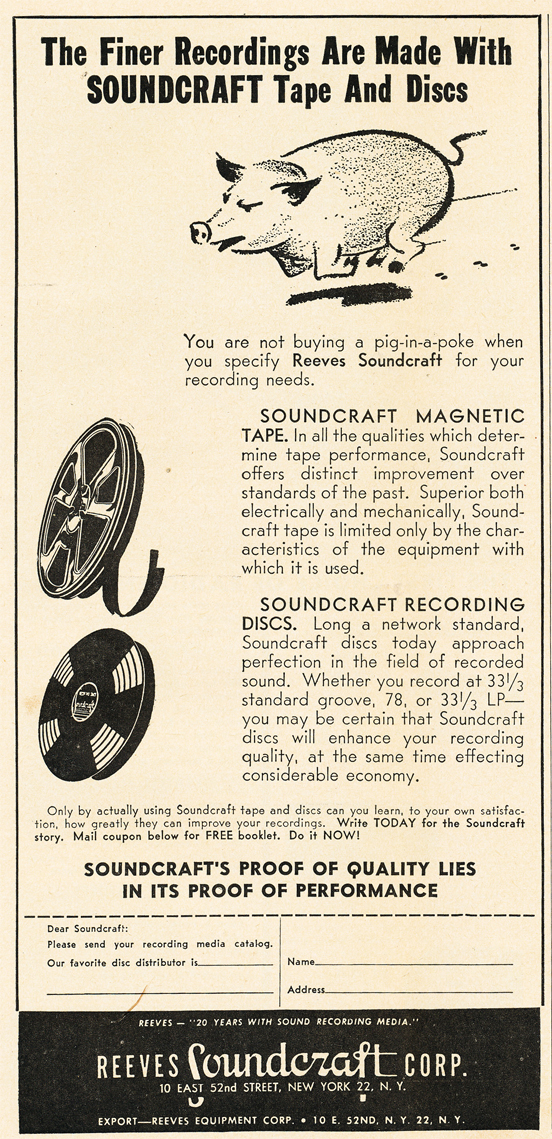
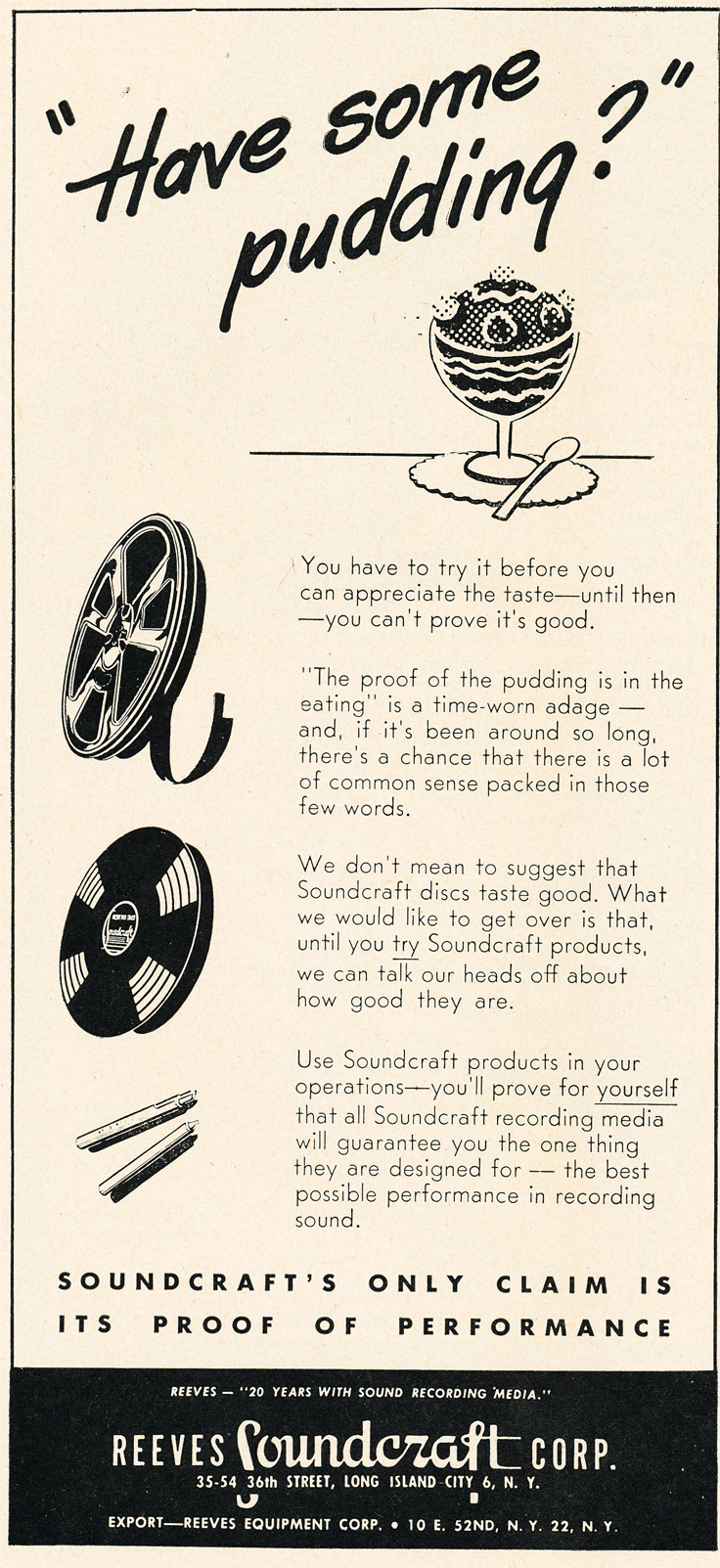
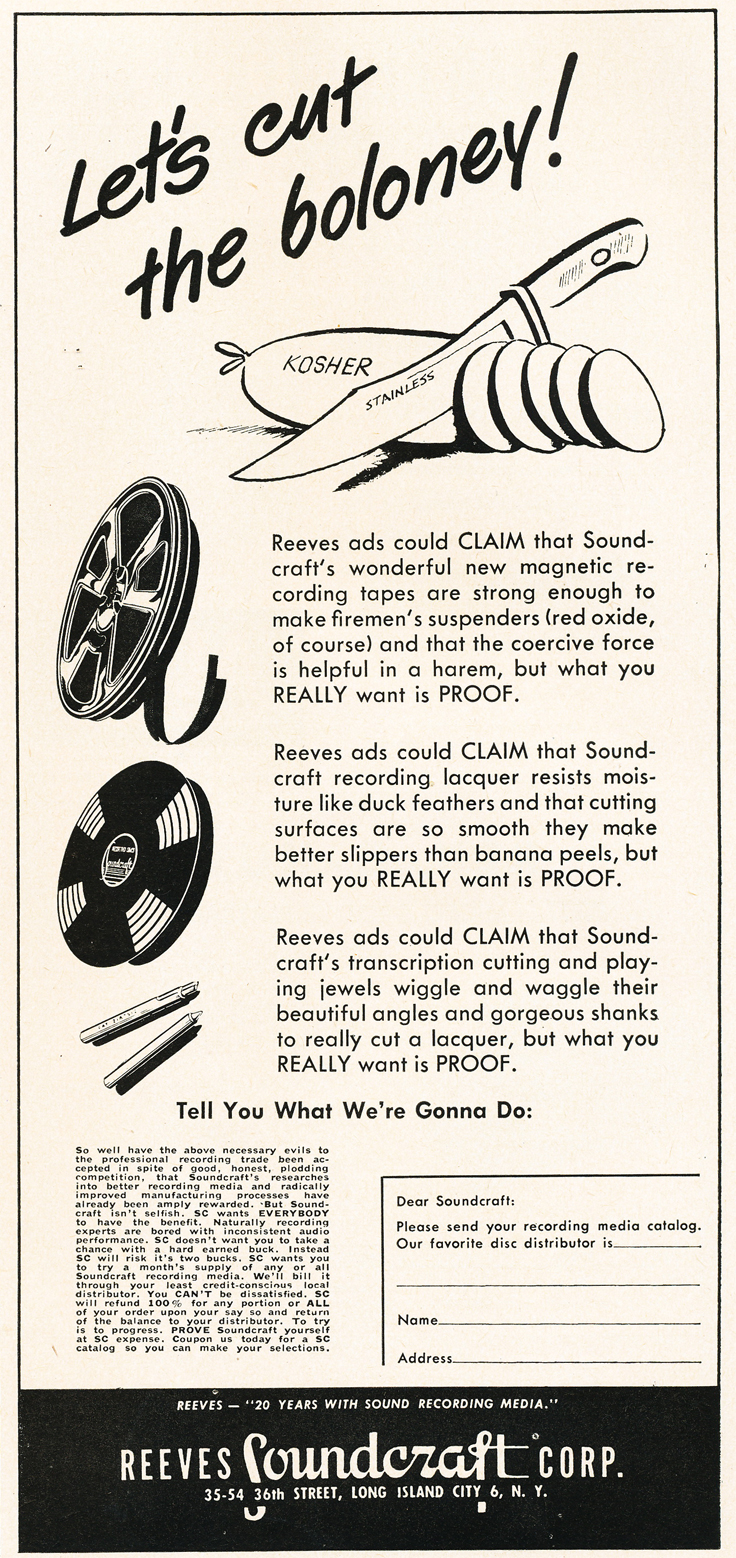
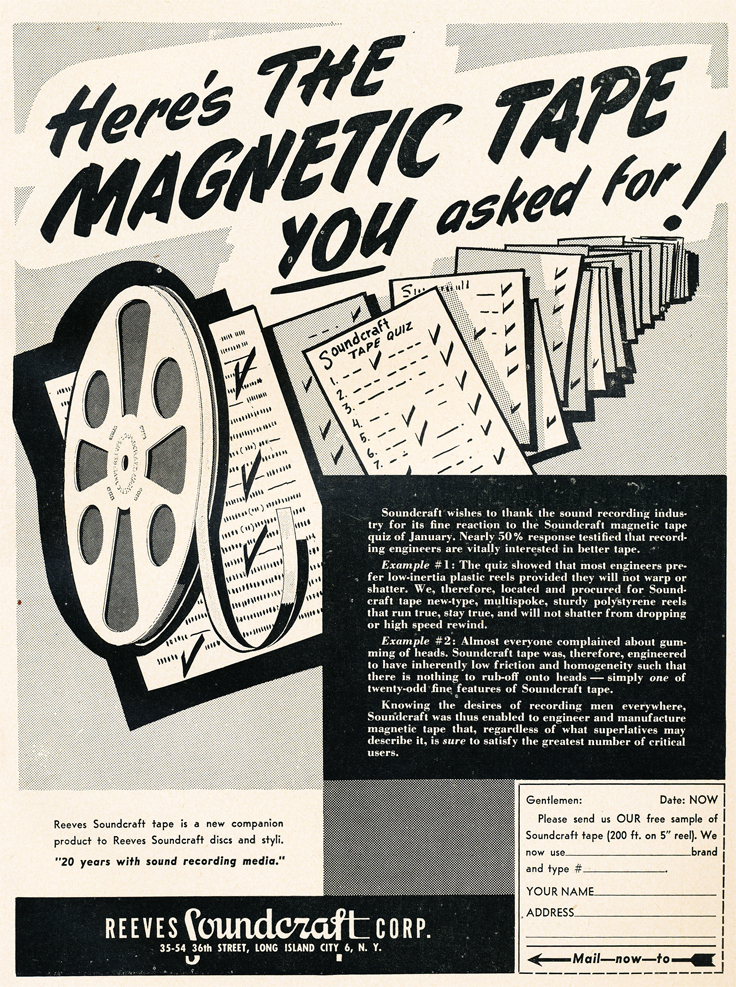
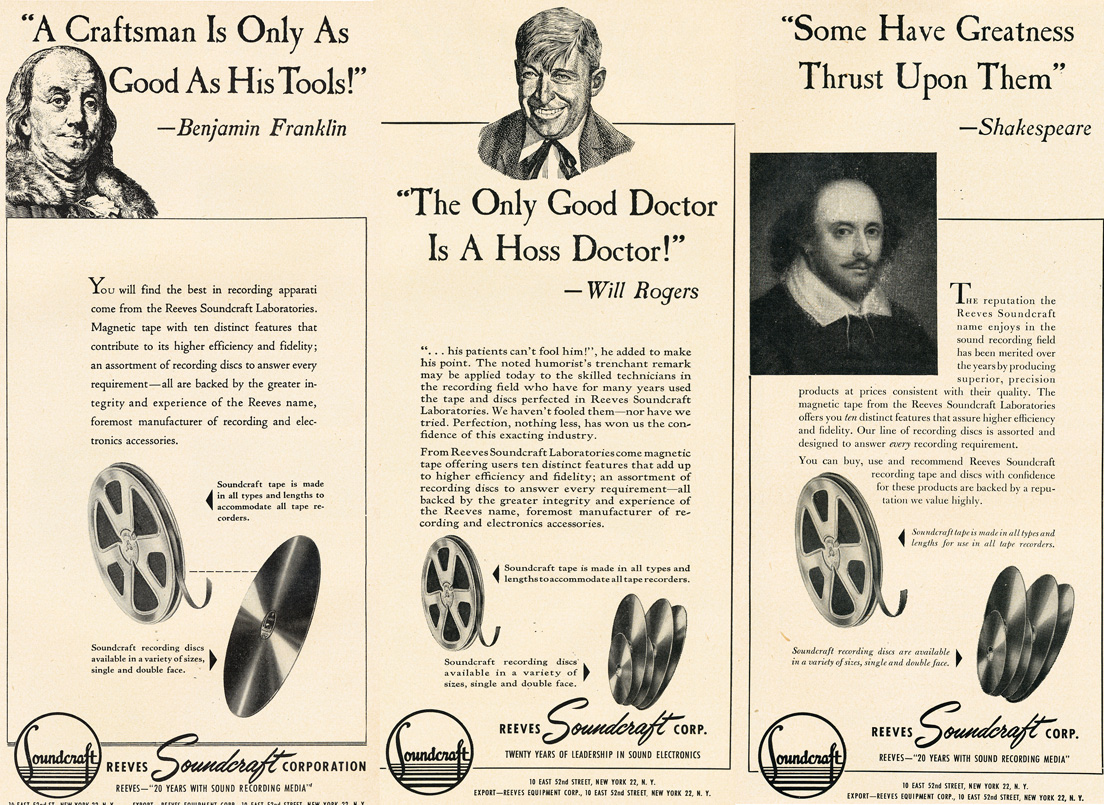
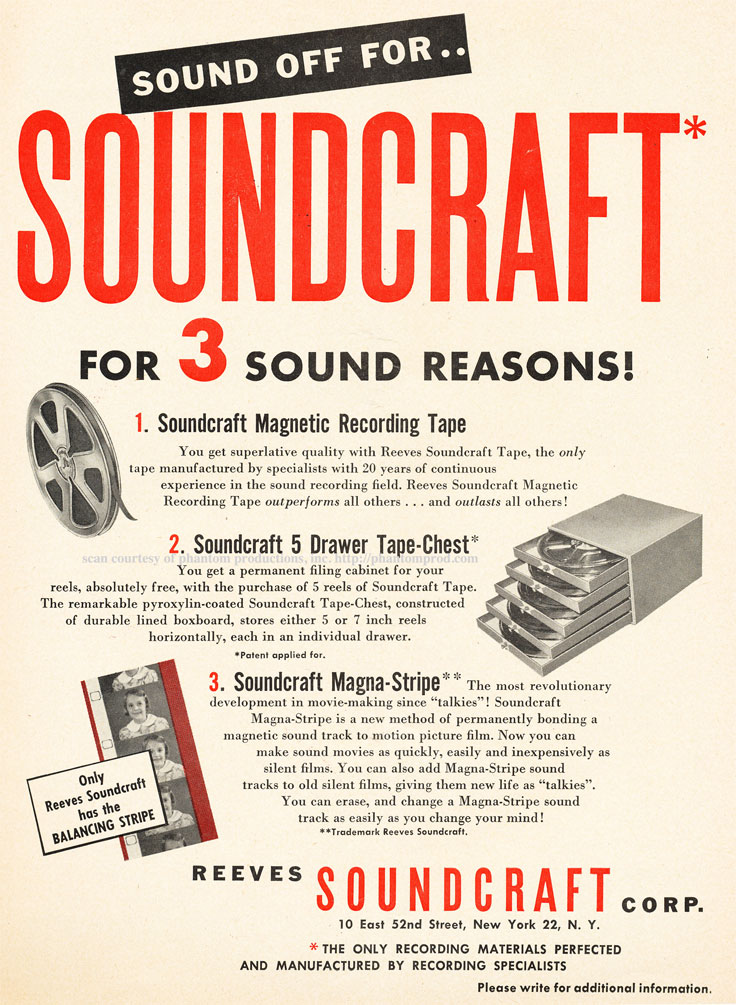
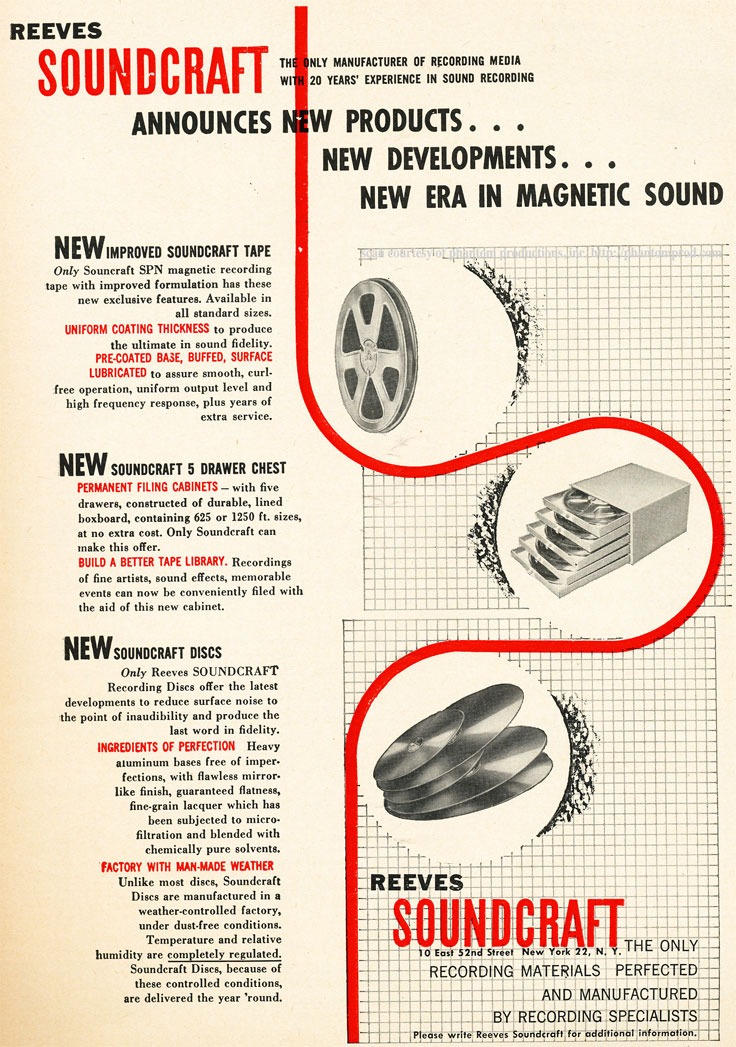

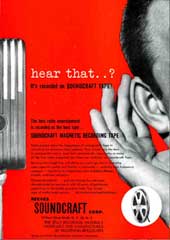
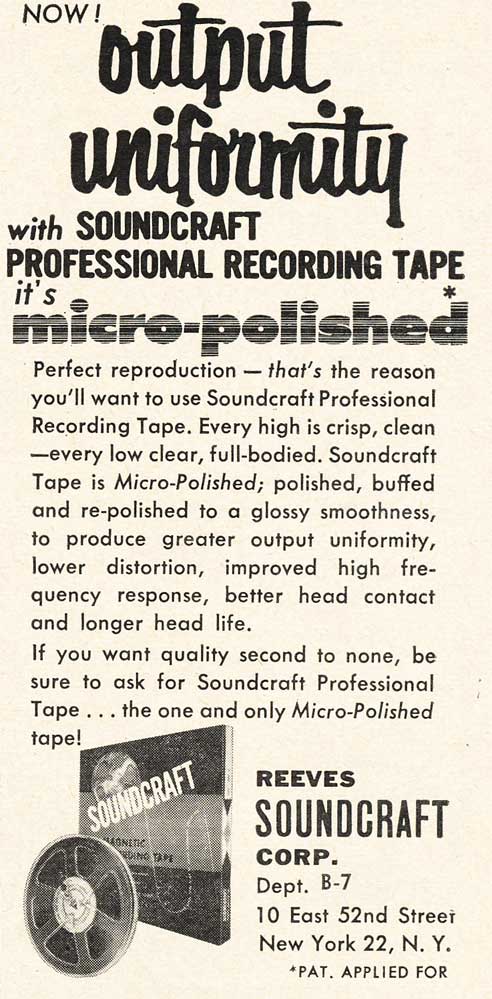

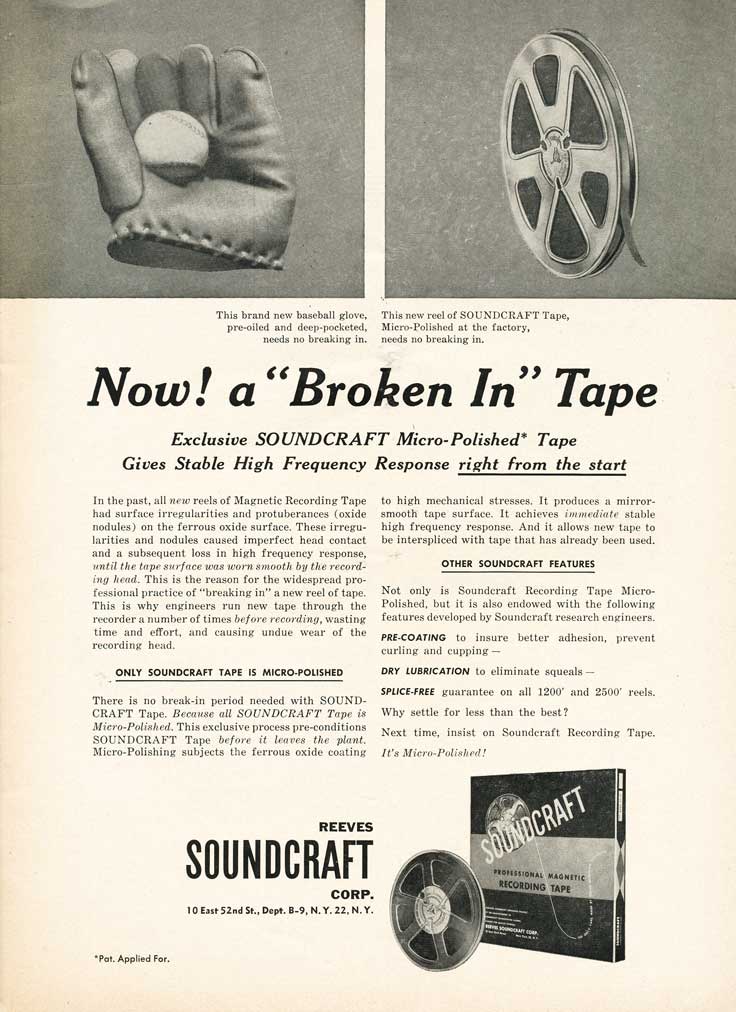
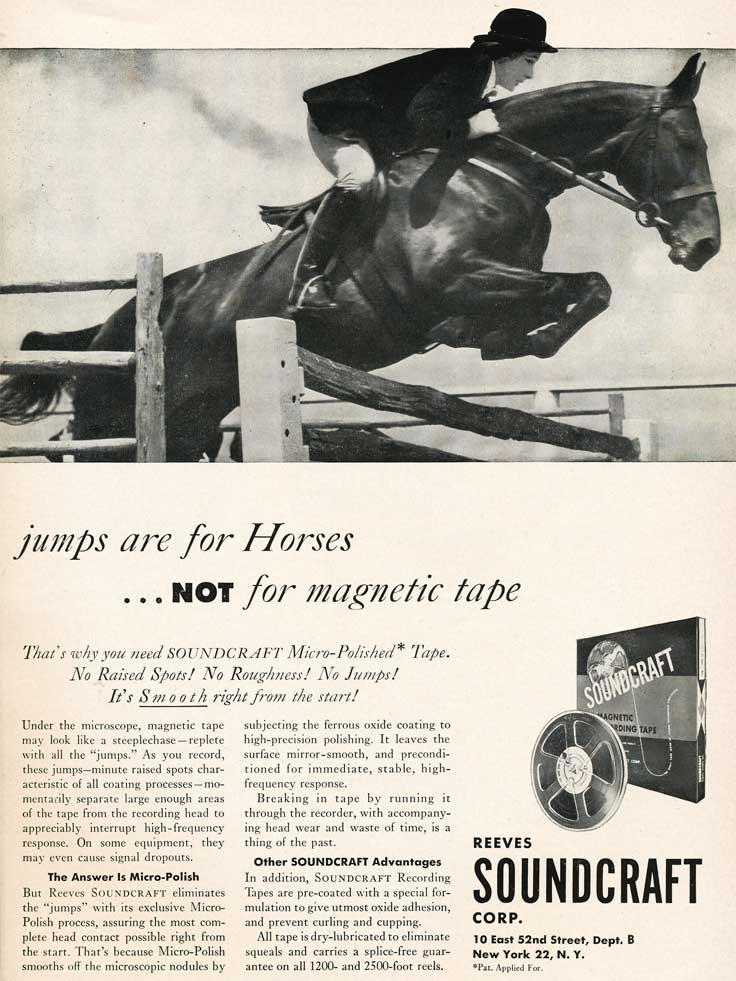

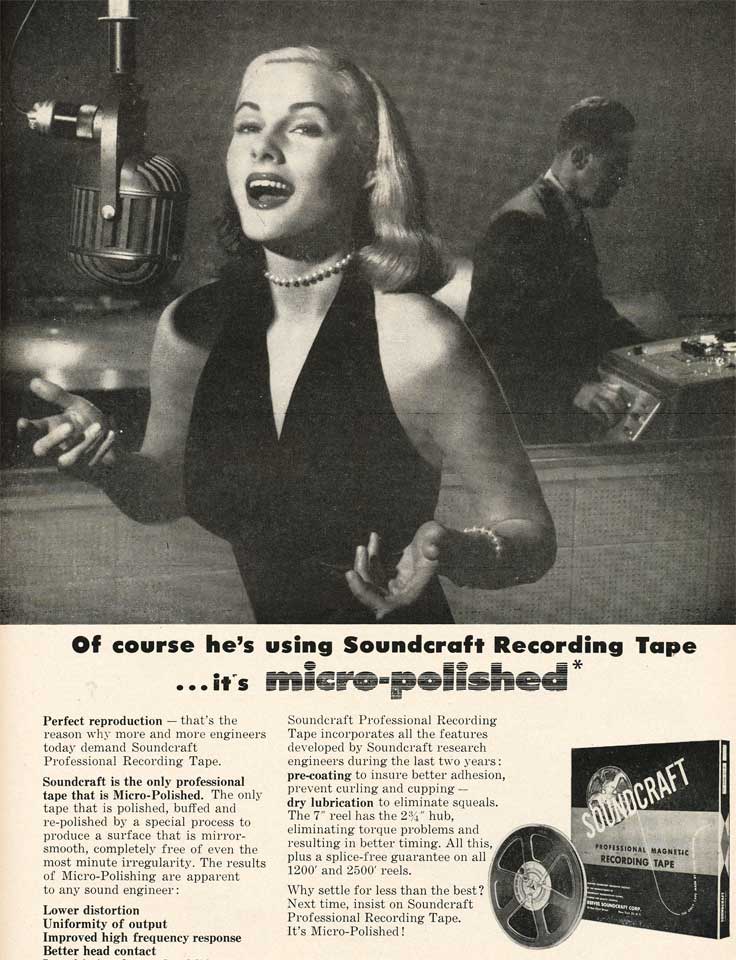
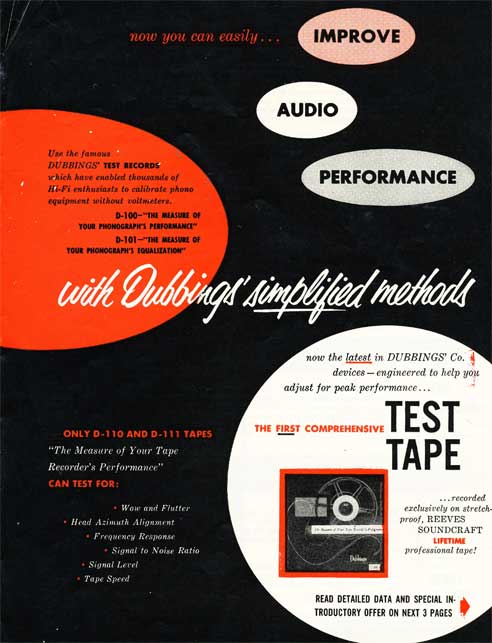
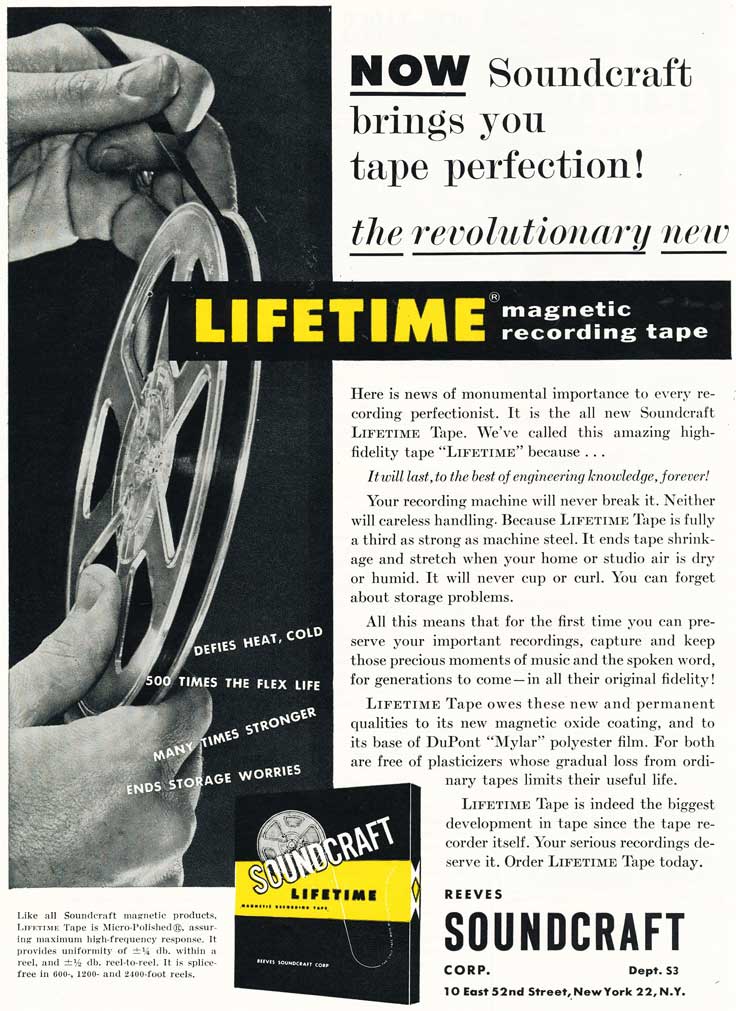
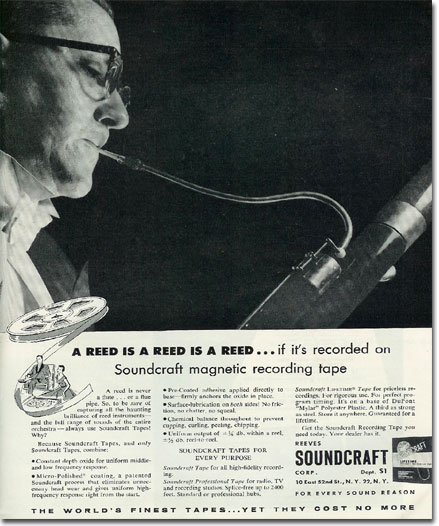
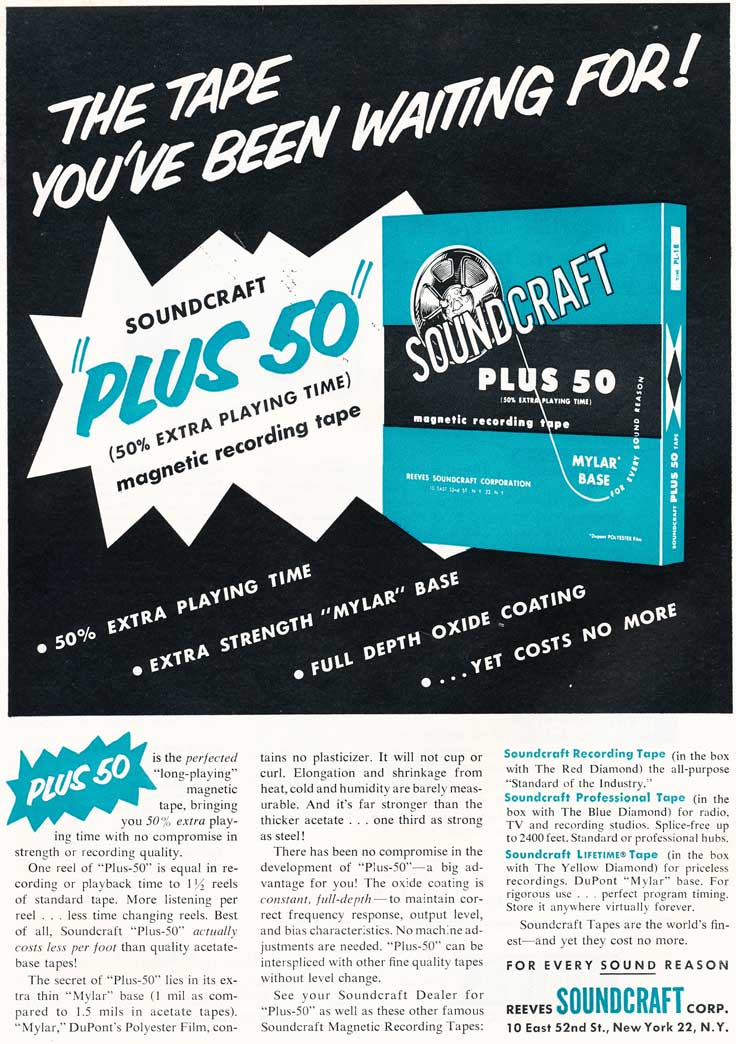
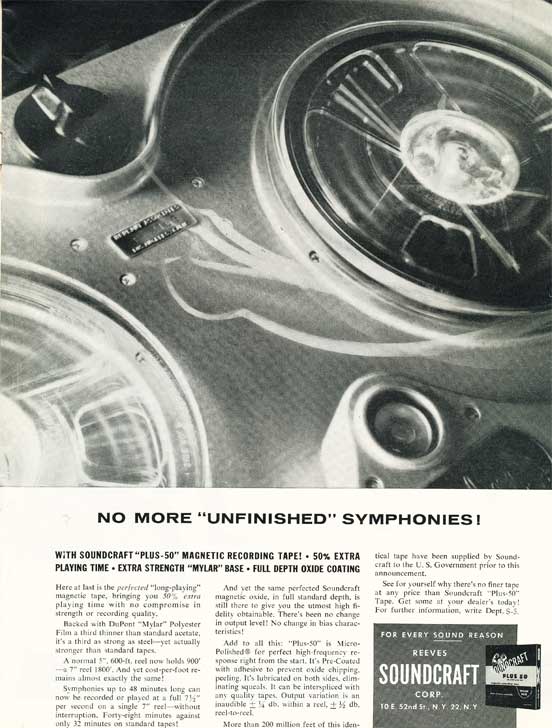
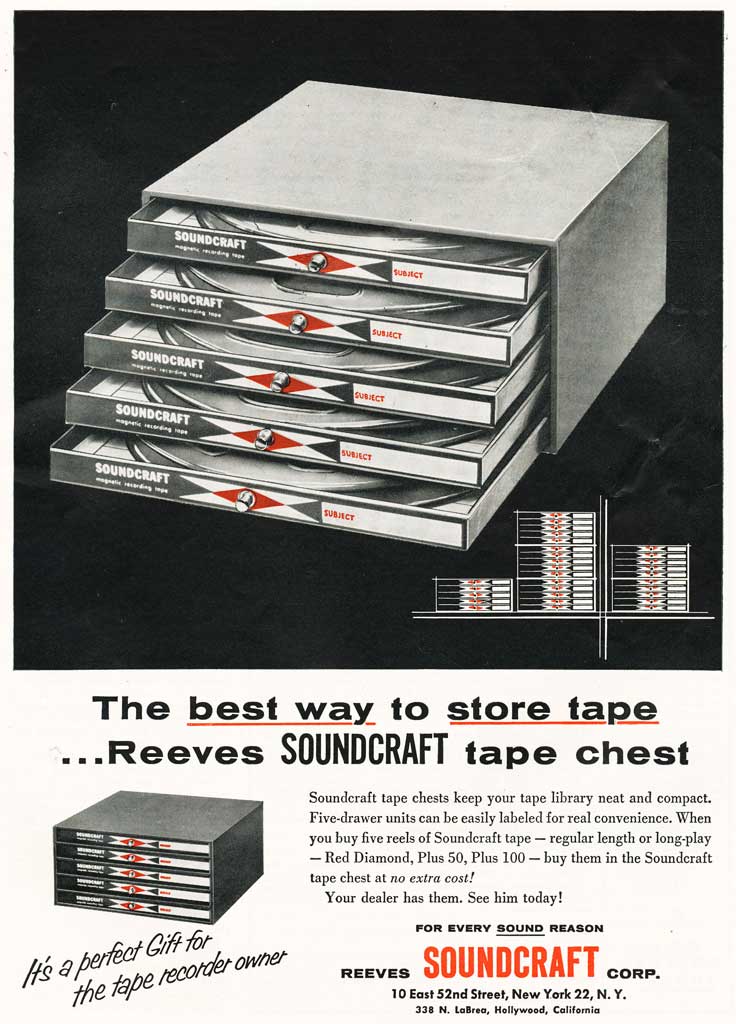
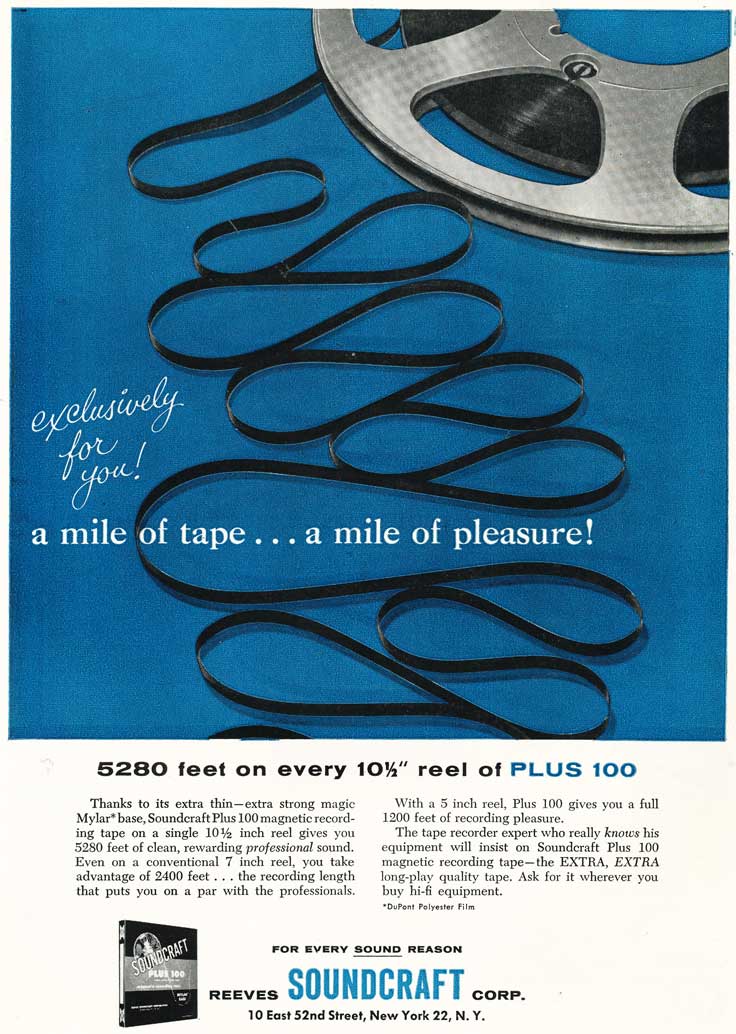
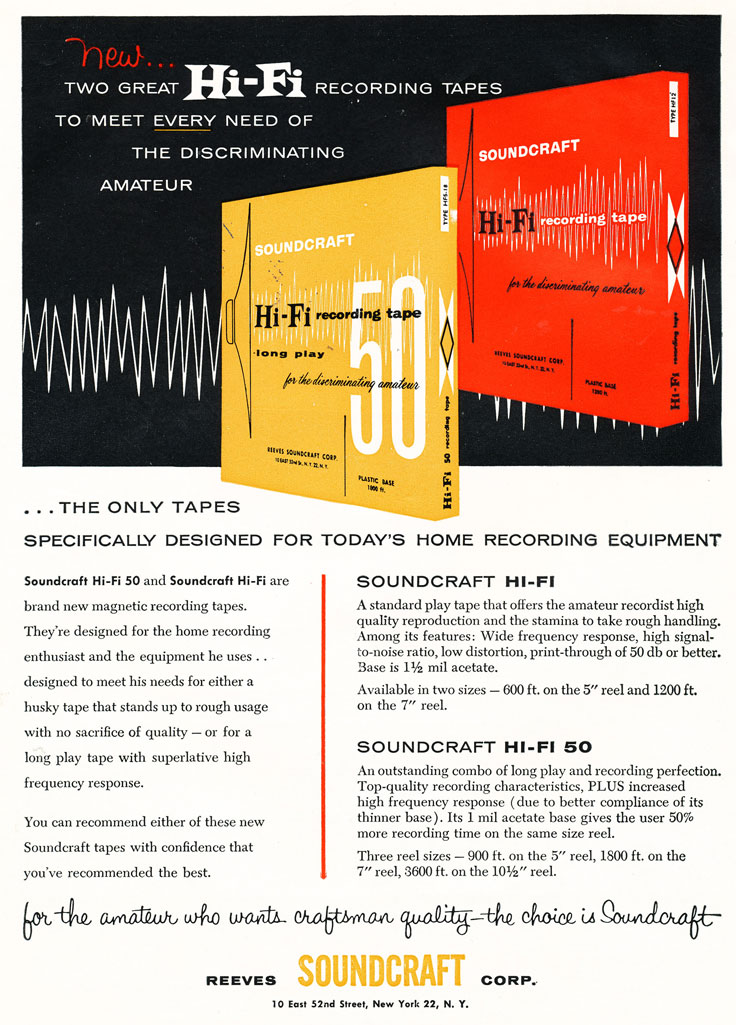
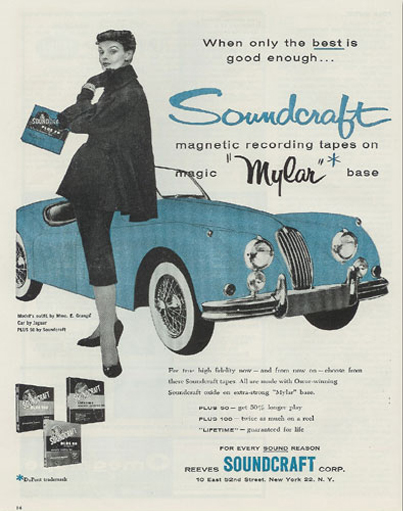

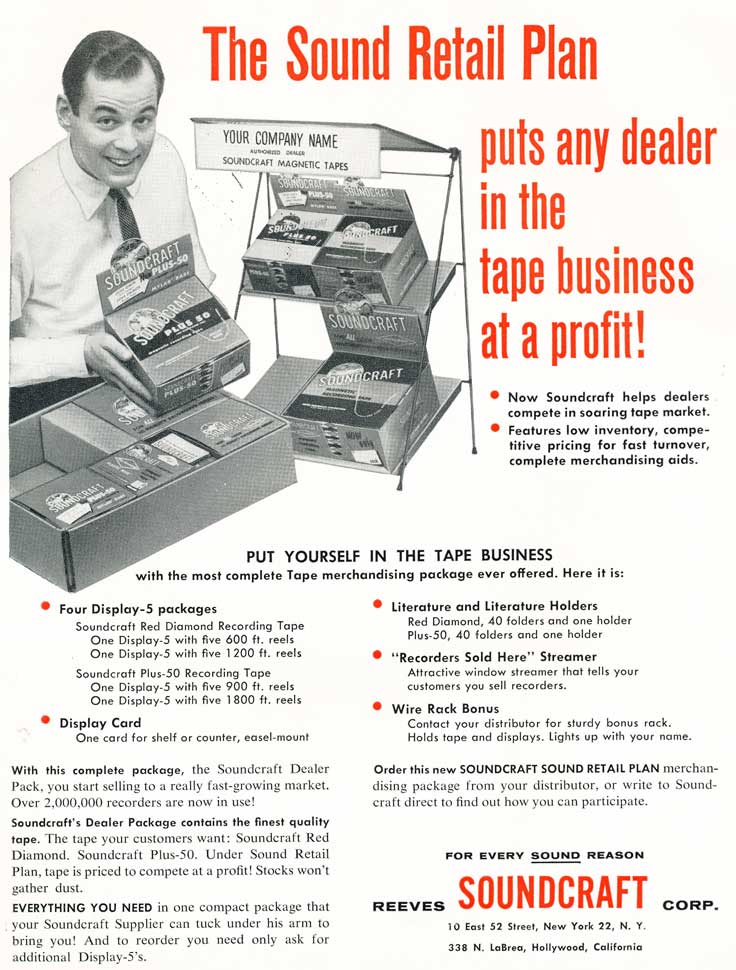


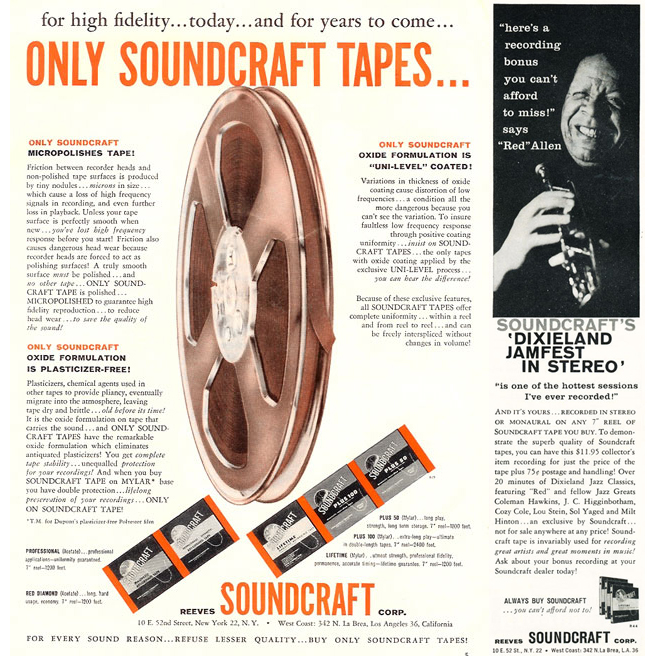
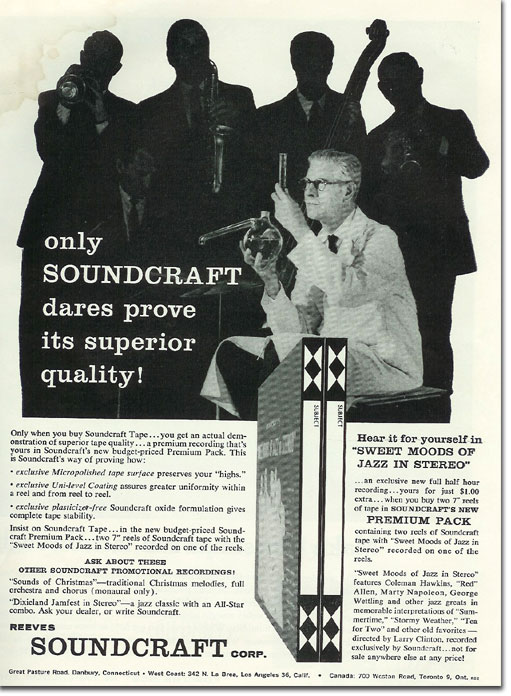
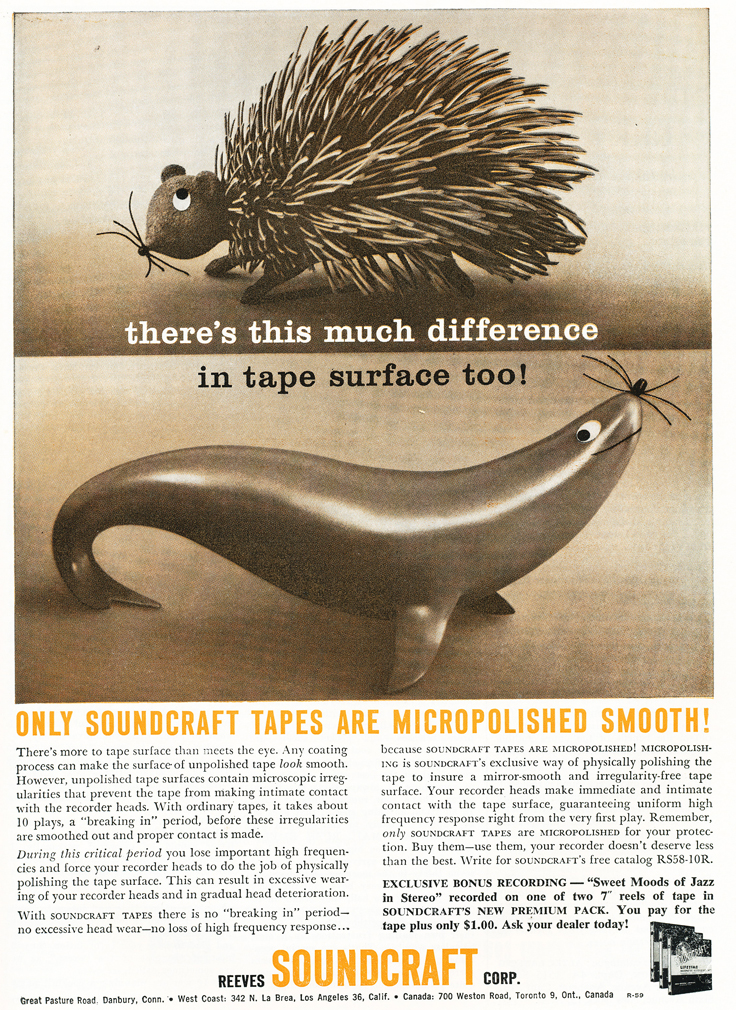
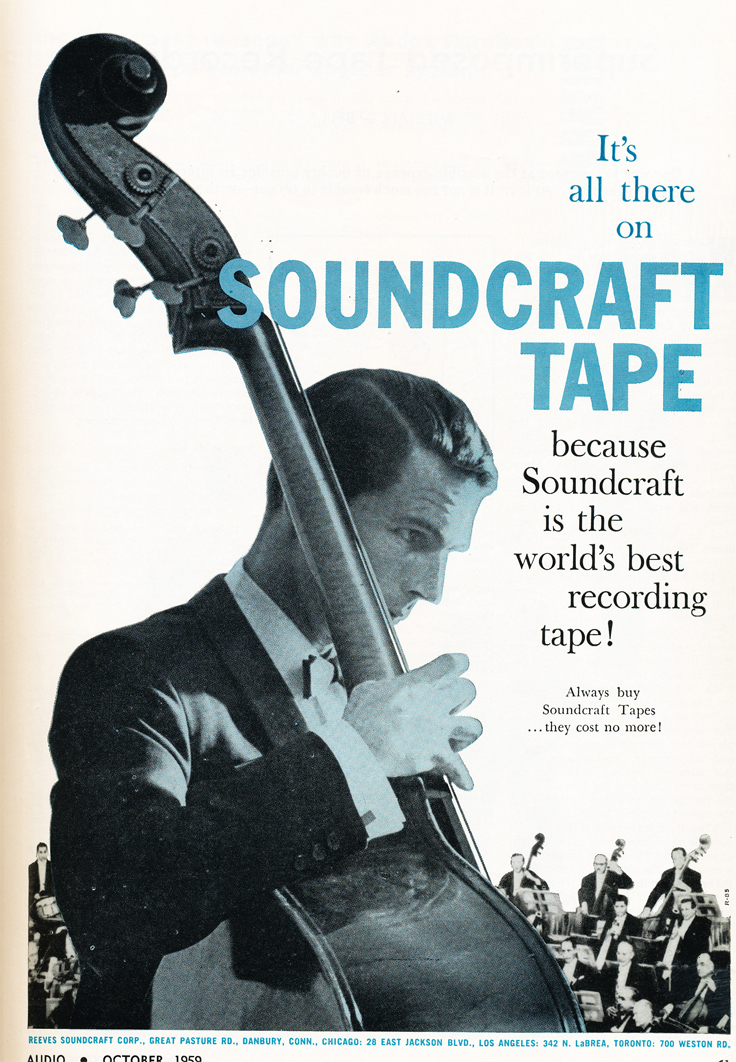
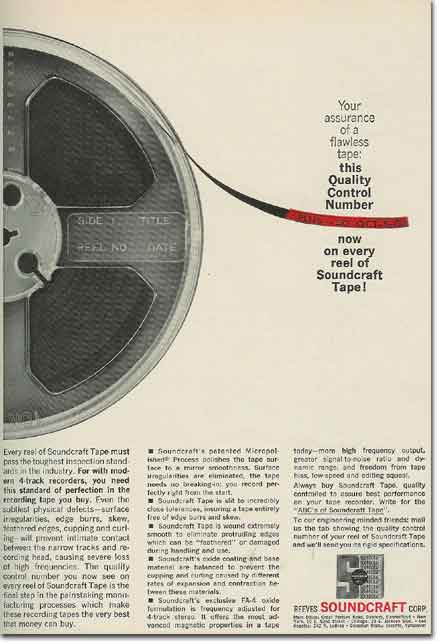
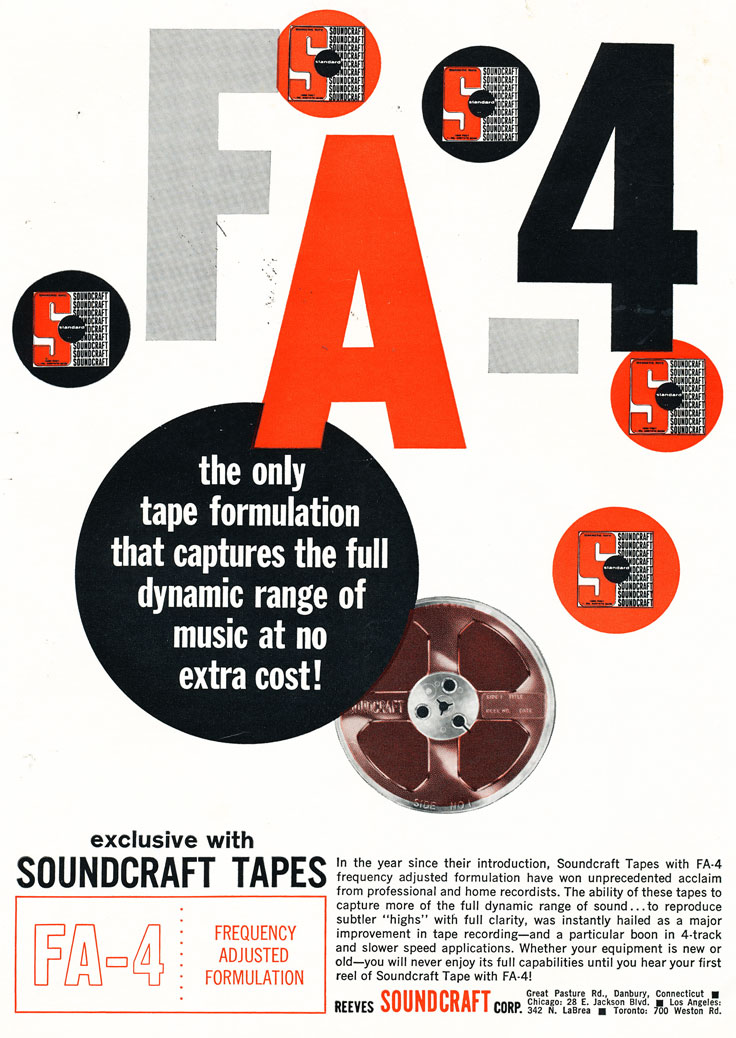

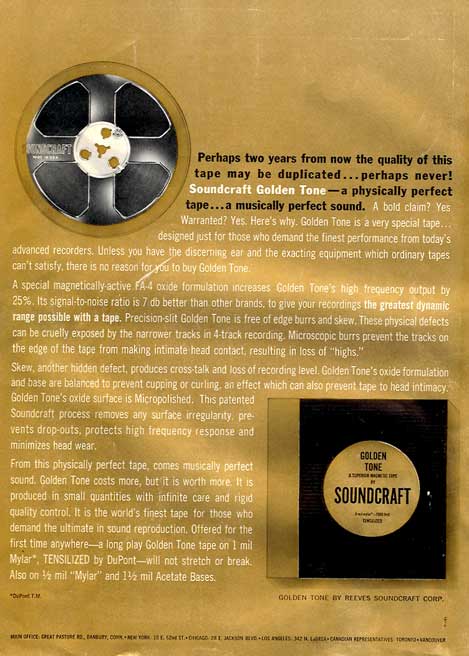
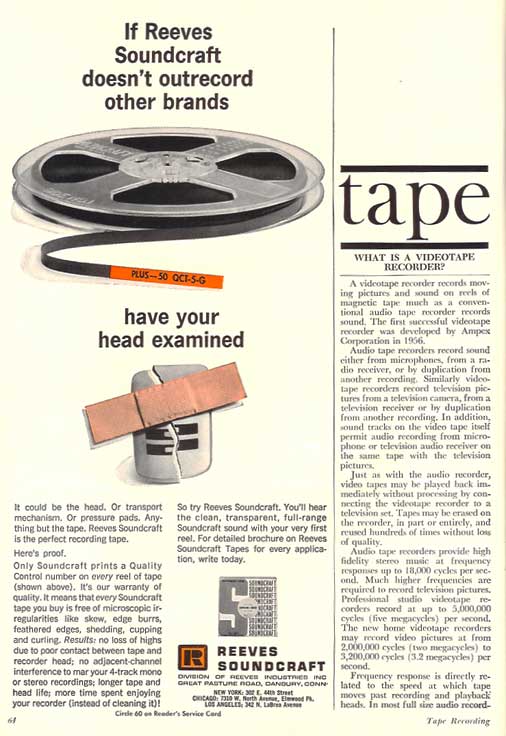
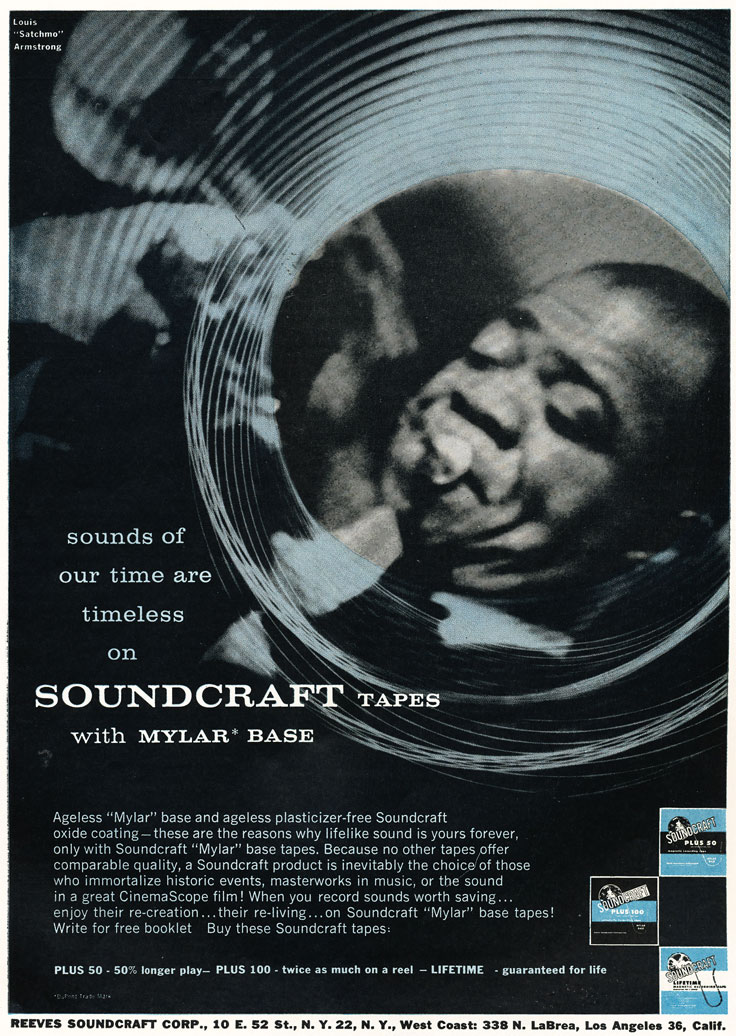

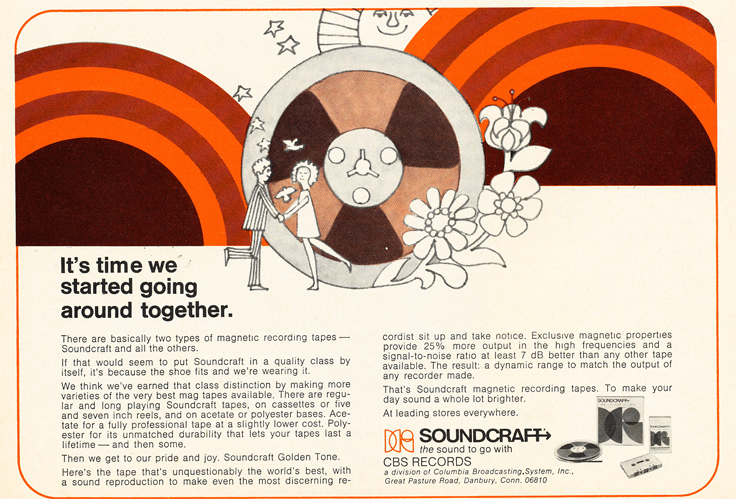

Soundcraft Electronics, Ltd.
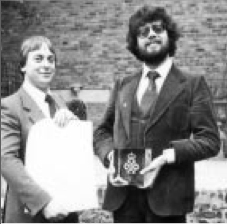 Soundcraft is a British manufacturer of mixing consoles and other professional audio equipment, and is a subsidiary of Harman International Industries. It was founded by sound engineer Phil Dudderidge and electronics designer Graham Blyth in 1973.
Soundcraft is a British manufacturer of mixing consoles and other professional audio equipment, and is a subsidiary of Harman International Industries. It was founded by sound engineer Phil Dudderidge and electronics designer Graham Blyth in 1973.
Phil Dudderidge (born 6 February 1949 in Watford) is an English sound engineer. He is a notable figure in the professional audio industry, having w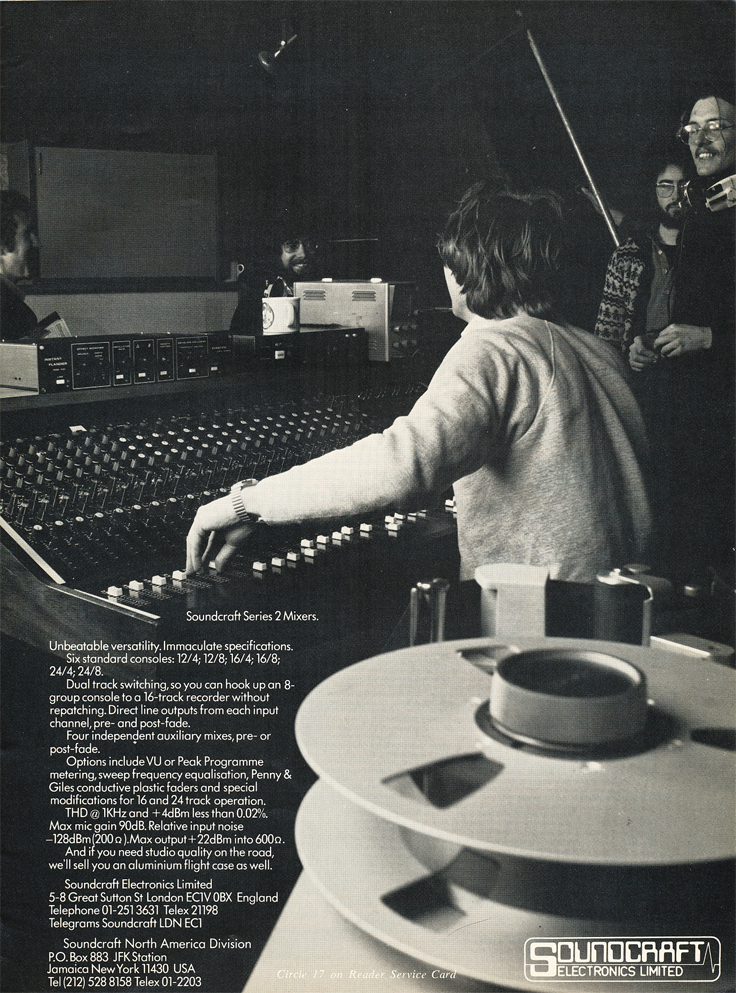 orked as Led Zeppelin's first dedicated live soundman, and later co-founding Soundcraft Electronics before serving as Chairman of Focusrite Audio Engineering, Ltd.
orked as Led Zeppelin's first dedicated live soundman, and later co-founding Soundcraft Electronics before serving as Chairman of Focusrite Audio Engineering, Ltd.
Graham Blyth is an English audio engineer who is known for designing mixing consoles. He is a co-founder of Soundcraft, a manufacturer which Blyth helped form into a world leader in sound reinforcement and recording mixers, establishing the "British sound". After succeeding in electrical engineering he became a professional organist, performing on pipe organs around the world. Blyth is a Fellow of both the Royal Society of Arts (RSA) and the Audio Engineering Society (AES) In 2012 he was awarded an honorary doctorate degree in science from the University of Hertfordshire.
History
Soundcraft first made its mark with the launch of the Series 1, the first mixing console built into a flight-case. It was available in 12 or 16 input channels. It featured 4 outputs, Main stereo plus a post-fader ‘echo’ send and pre-fader foldback. Each channel had 4-band fixed-frequency EQ. The Series 1 also included a multi-pin connector that integrated with a multi-channel microphone snake to route signals from and to the stage from a mix position in the audience.
The Series 1S was introduced in 1975 as an upgraded Series 1. The Series 1S introduced the classic Soundcraft 4-band EQ with 2 sweepable mid-range sections. In addition to
The Series 1S added a second foldback send and was available in a 20 channel version.[
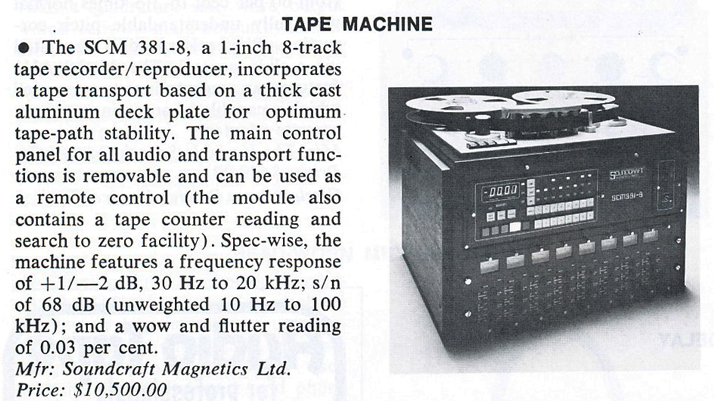 In 1975 the Series 2 console was introduced as a live/recording console. The Series 2 began to build Soundcraft's reputation for great-sounding desks with the classic 'British Sound'. The Series 2 wasintroduced as a 4 bus console and was later available in an 8 bus version. It was initially offered in 12 and 16 channel versions, and a 24 channel version was later added. The design used a semi-modular approach with individual channels in separate modules. The master section was made up of echo return, group output, cue master and monitoring modules. The input channels were available in fixed-frequency EQ standard channel and swept EQ versions. The swept EQ version also allowed switching between microphone input and line input which was typically attached to a multi-track recorder output. All channels provided stereo pan as well as 4 cue send buses that could be configured as pre- or post-fader and allowed individual monitoring via a pre-fade listen (PFL) function. Each channel could be routed directly to the L/R mix bus or to odd/even pairs of sub-mix buses.
In 1975 the Series 2 console was introduced as a live/recording console. The Series 2 began to build Soundcraft's reputation for great-sounding desks with the classic 'British Sound'. The Series 2 wasintroduced as a 4 bus console and was later available in an 8 bus version. It was initially offered in 12 and 16 channel versions, and a 24 channel version was later added. The design used a semi-modular approach with individual channels in separate modules. The master section was made up of echo return, group output, cue master and monitoring modules. The input channels were available in fixed-frequency EQ standard channel and swept EQ versions. The swept EQ version also allowed switching between microphone input and line input which was typically attached to a multi-track recorder output. All channels provided stereo pan as well as 4 cue send buses that could be configured as pre- or post-fader and allowed individual monitoring via a pre-fade listen (PFL) function. Each channel could be routed directly to the L/R mix bus or to odd/even pairs of sub-mix buses.
Wikipedia
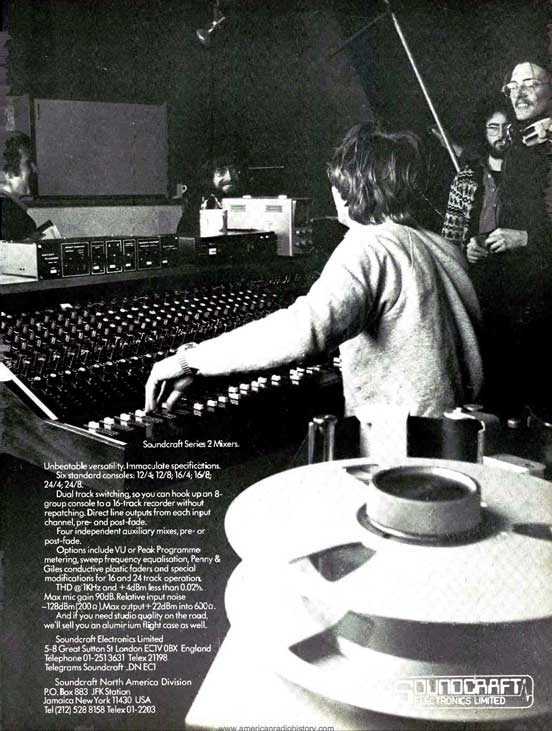
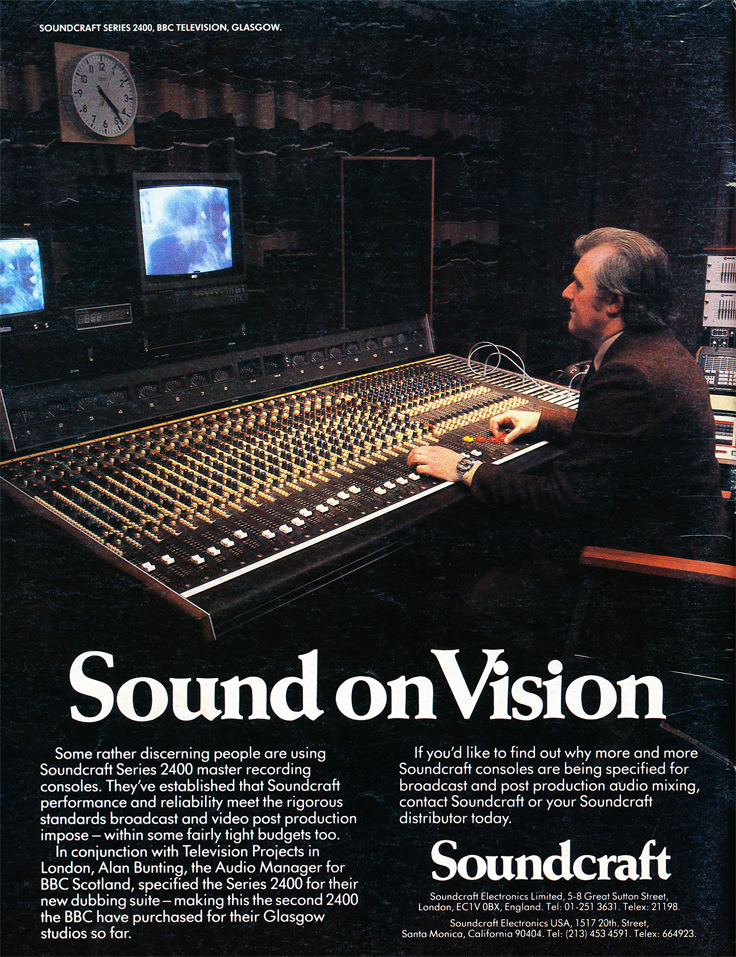

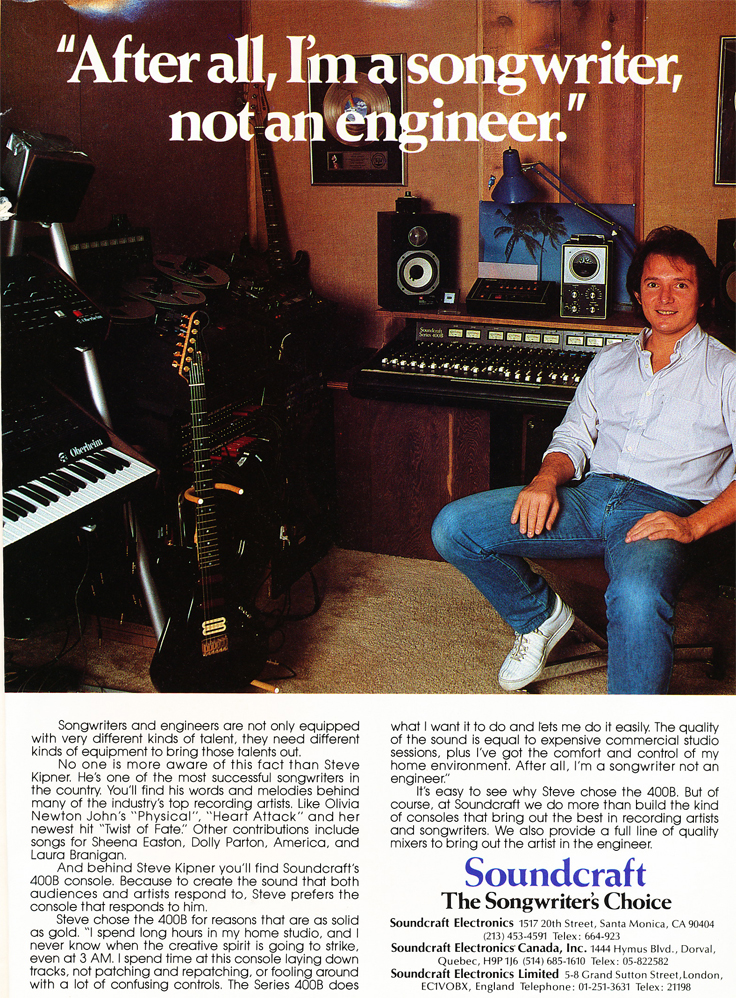


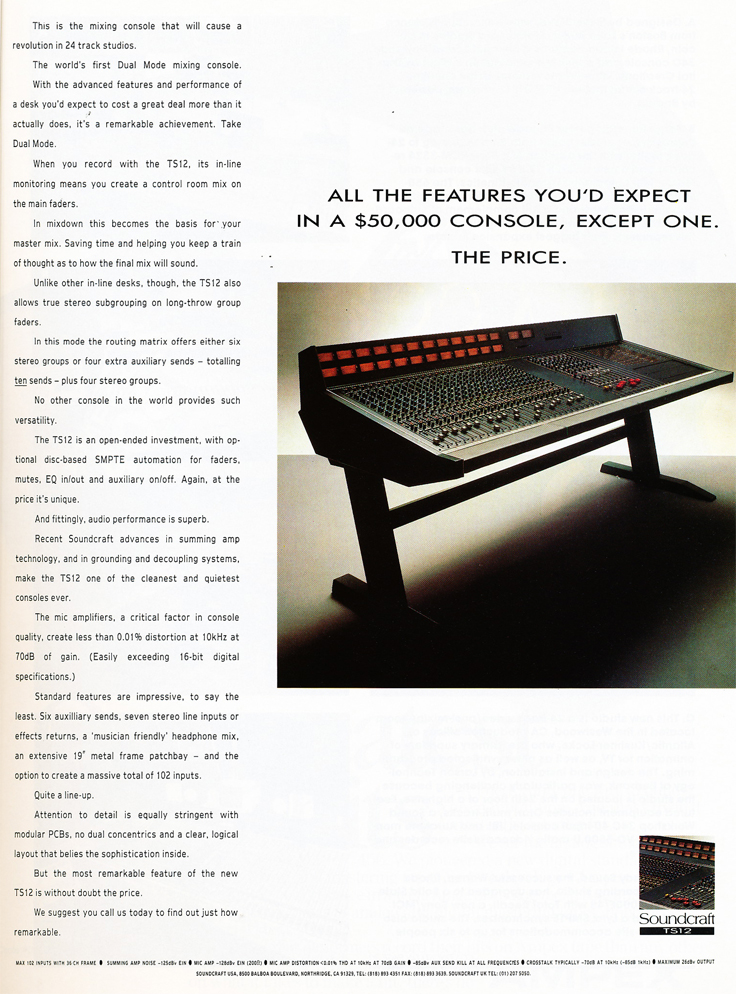
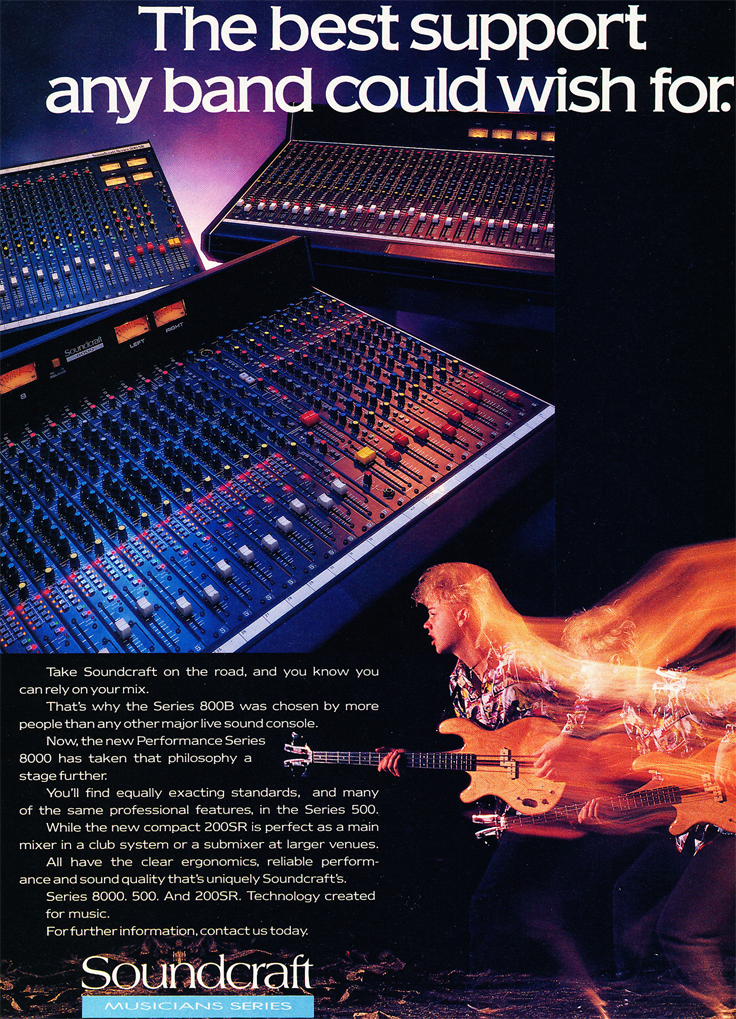
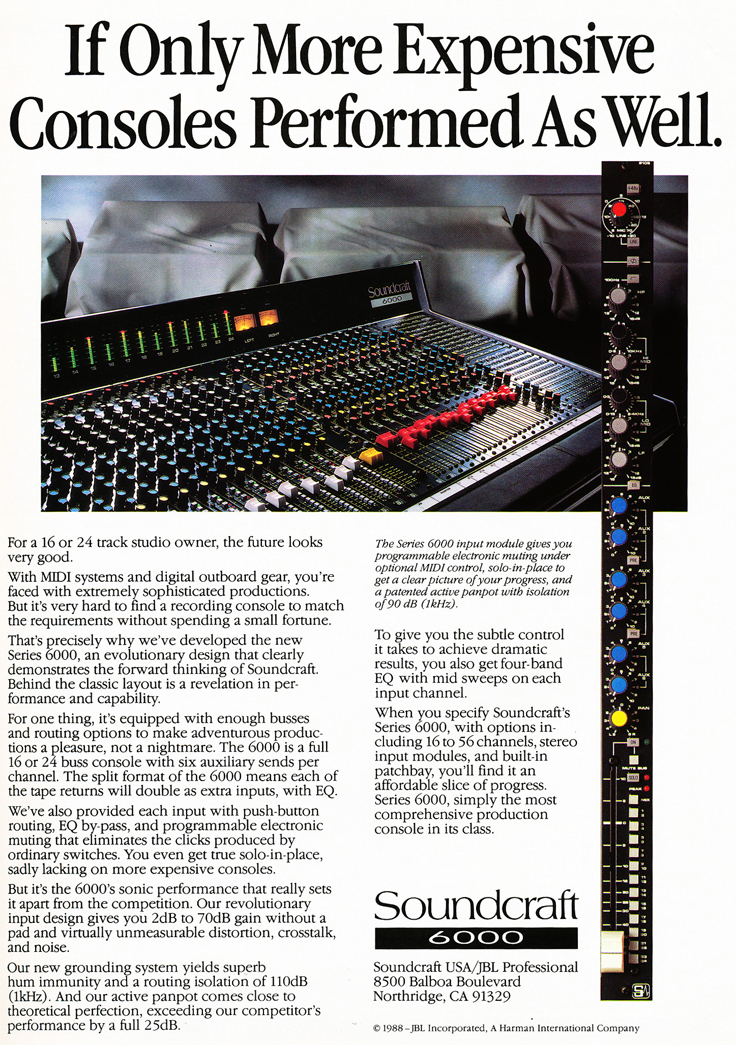
See also Multi-Track recording
We appreciate all photos sent to our museum. We hope to successfully preserve the sound recording history. If we have not credited a photo, we do not know its origin if it was not taken by the contributor. Please let us know if a photo on our site belongs to you and is not credited. We will be happy to give you credit, or remove it if you so choose. Please note: None of the recorders are for sale on our Museum site.
Soundcraft Series 760
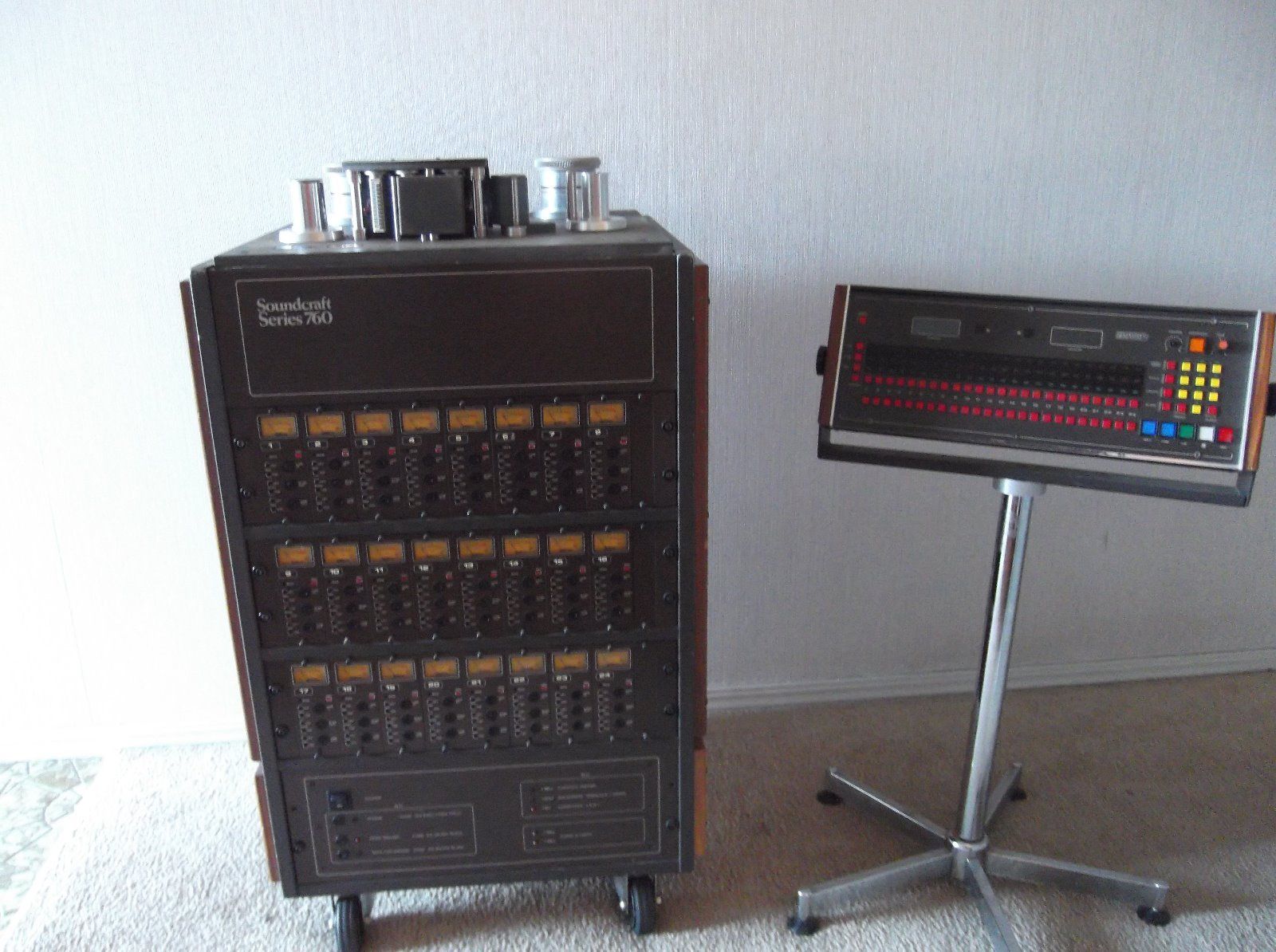
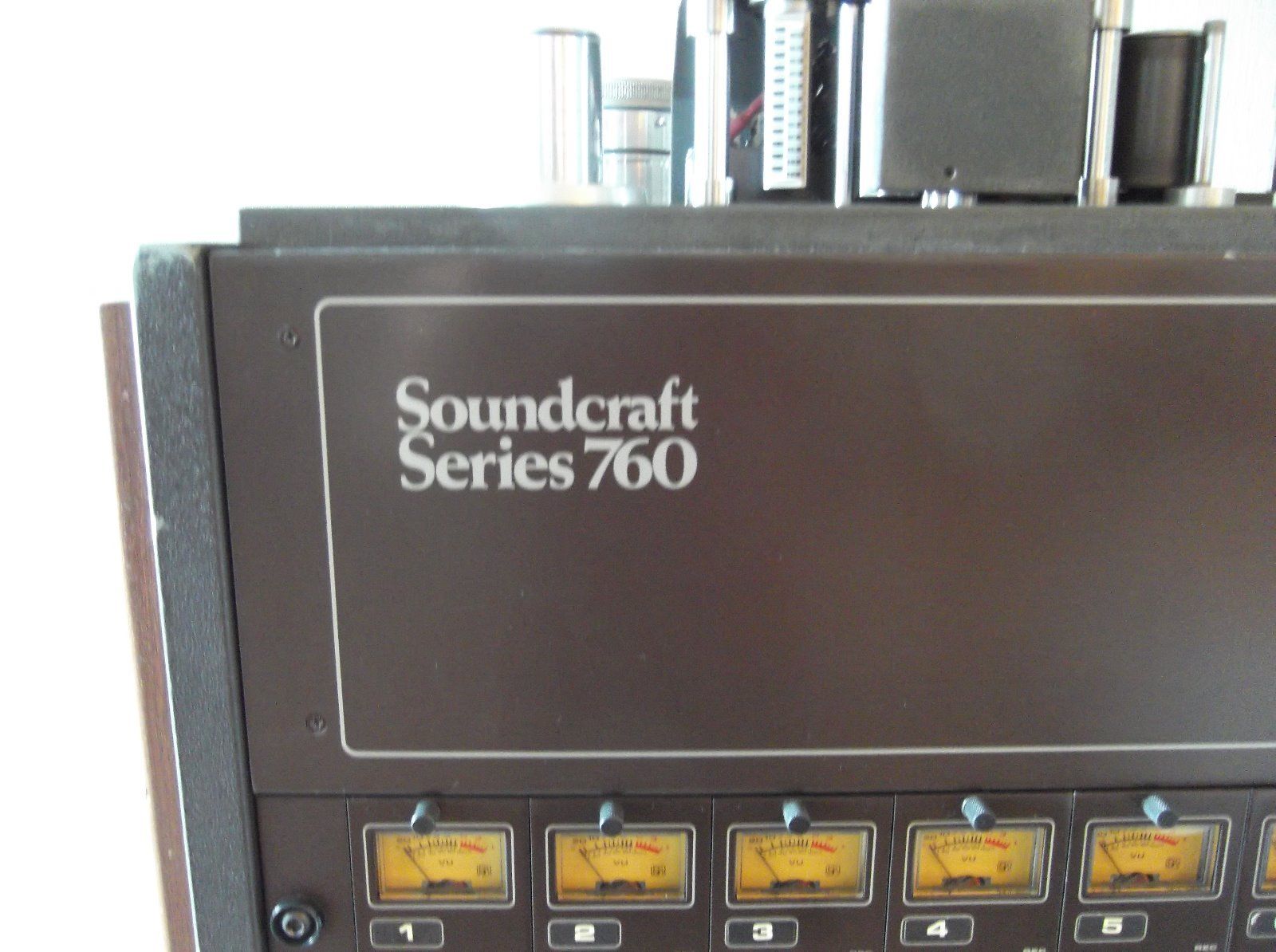

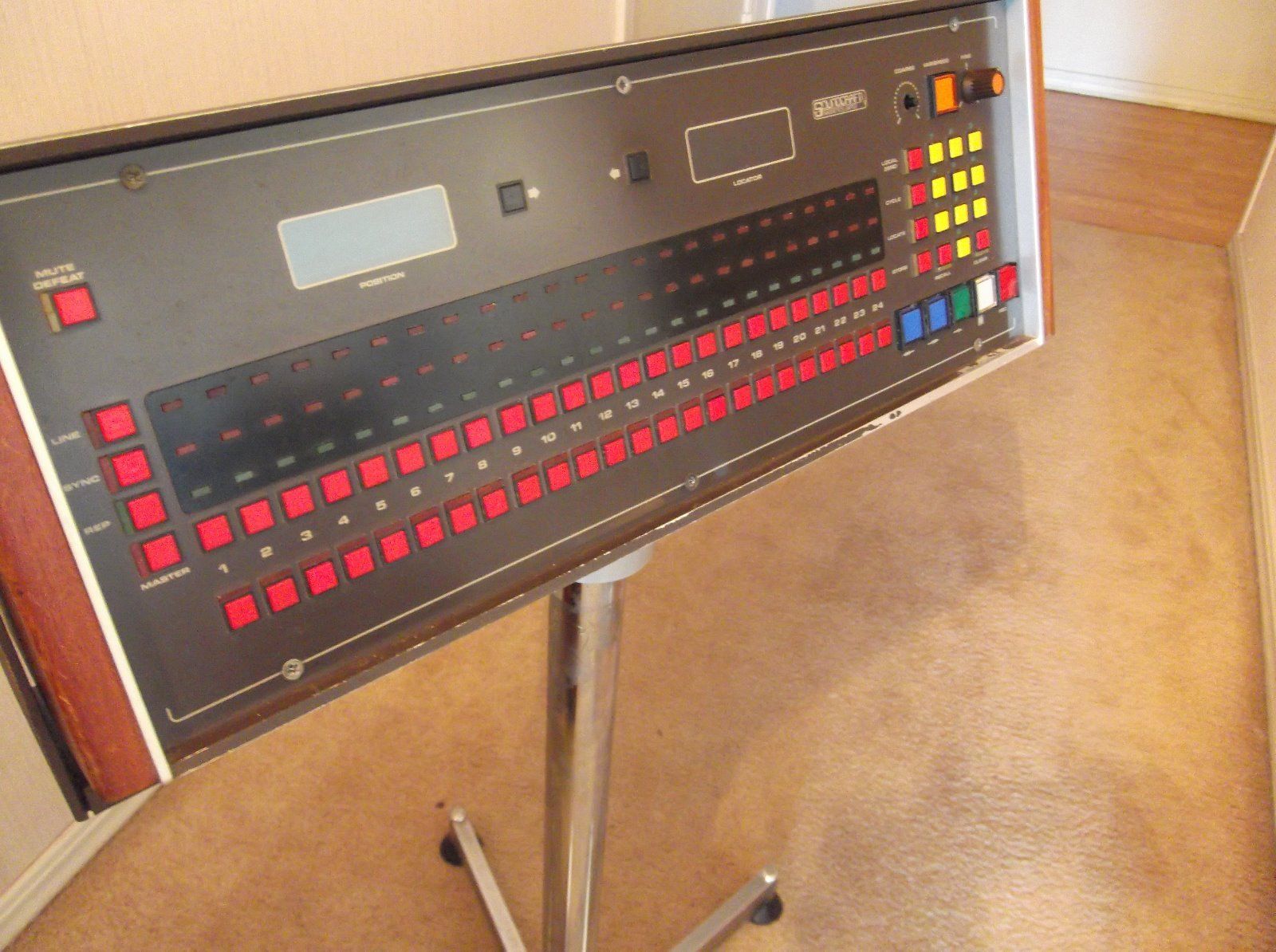
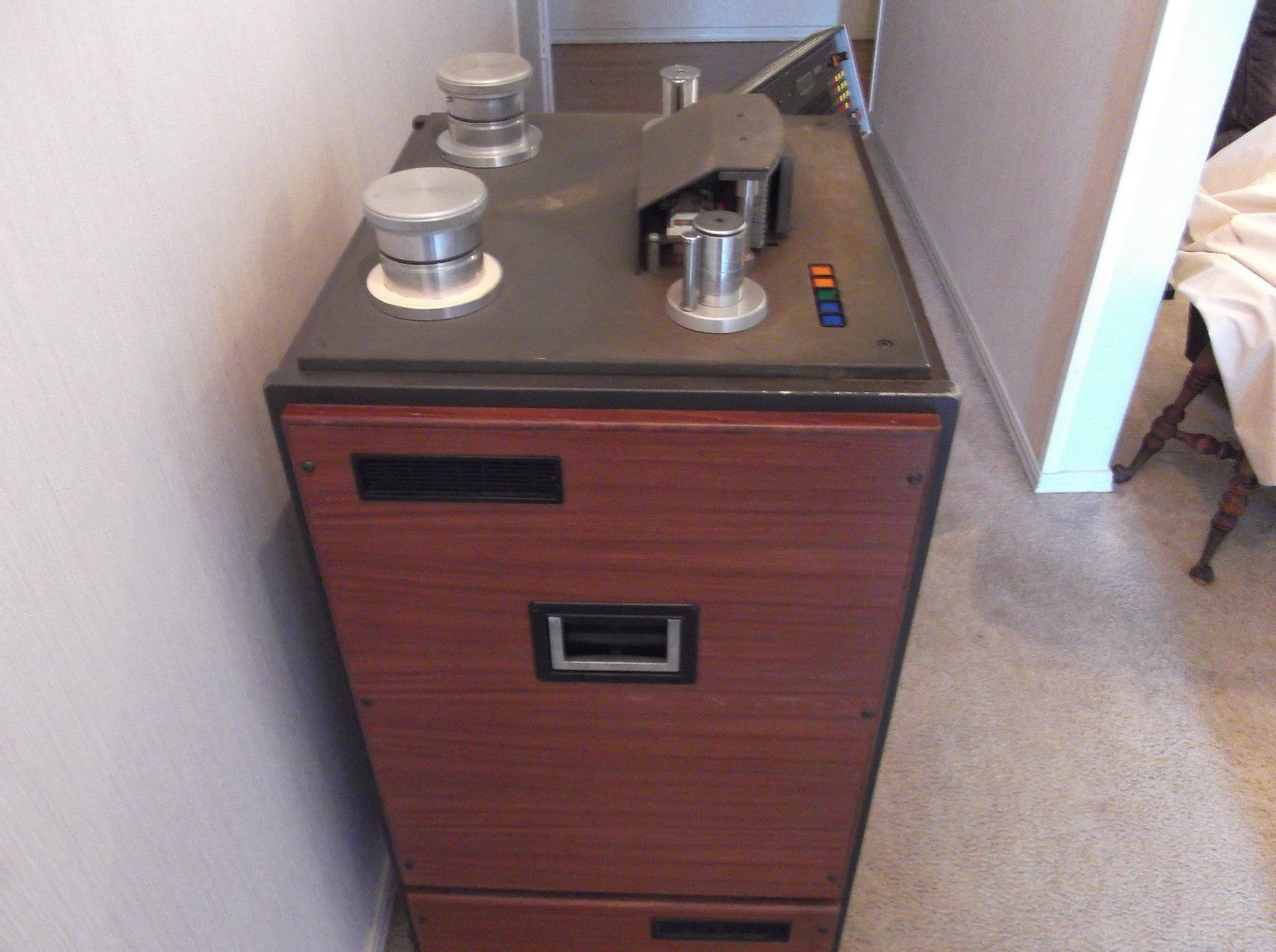
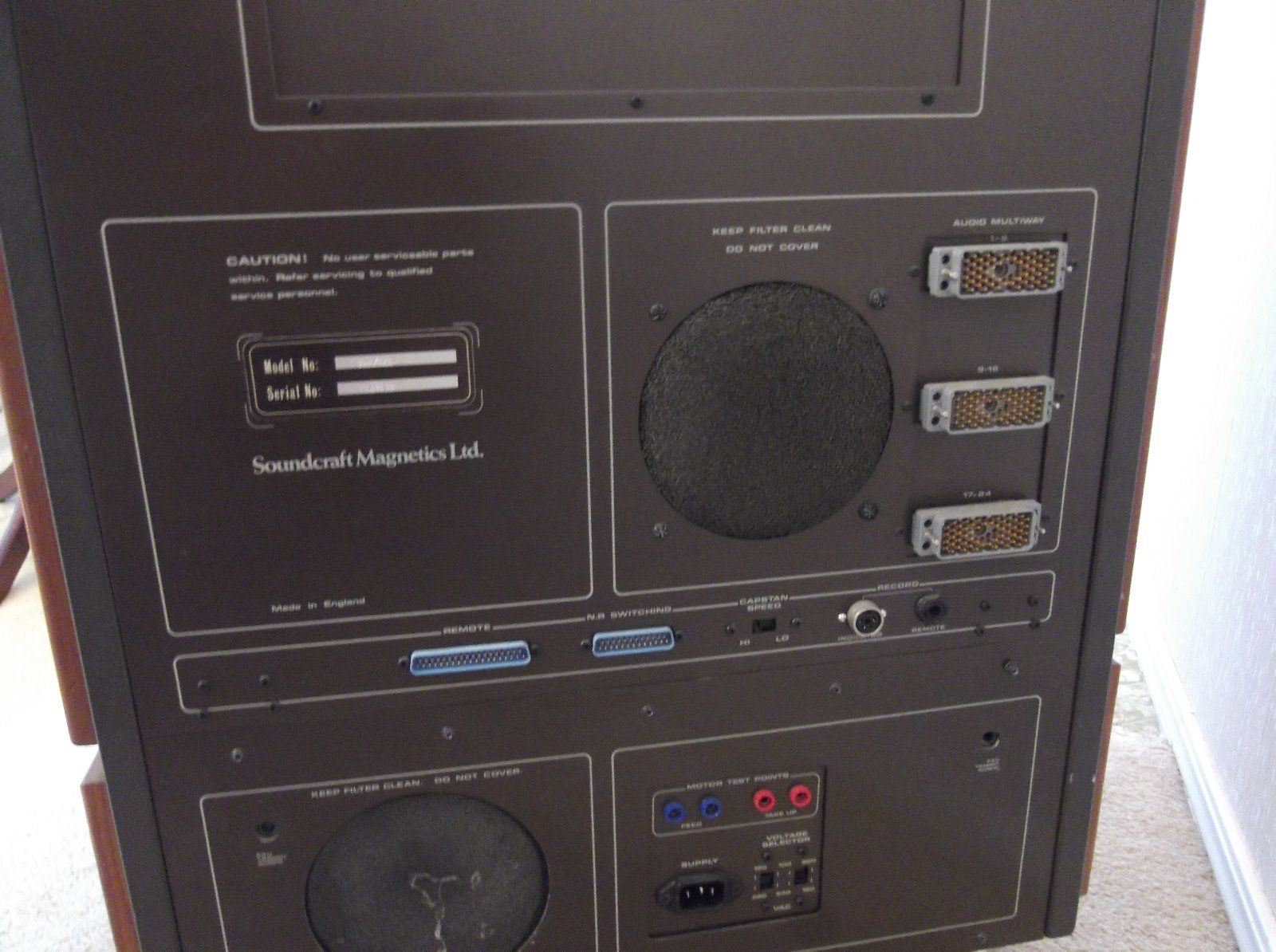
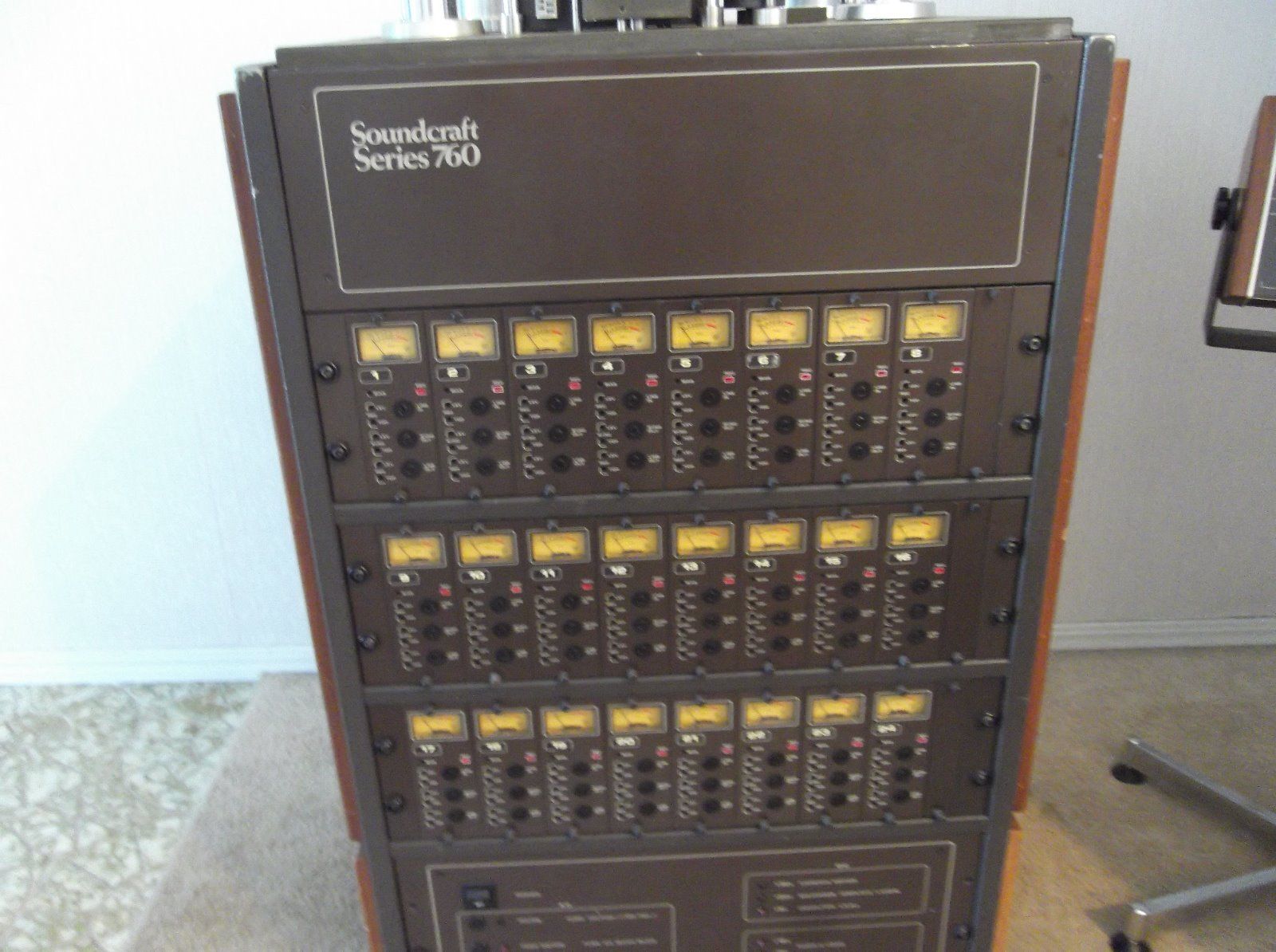
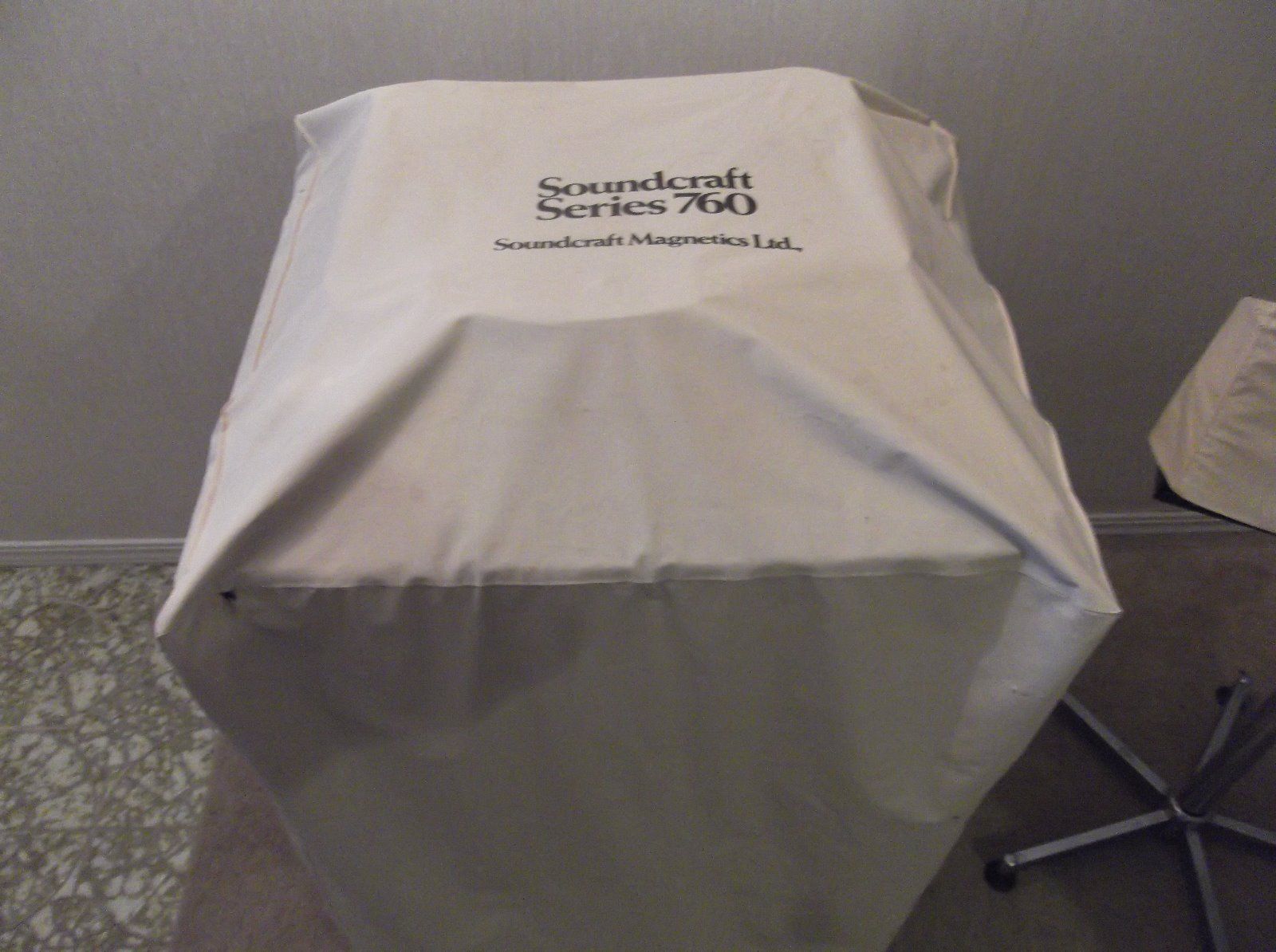
Soundcraft Magnetics 1600
